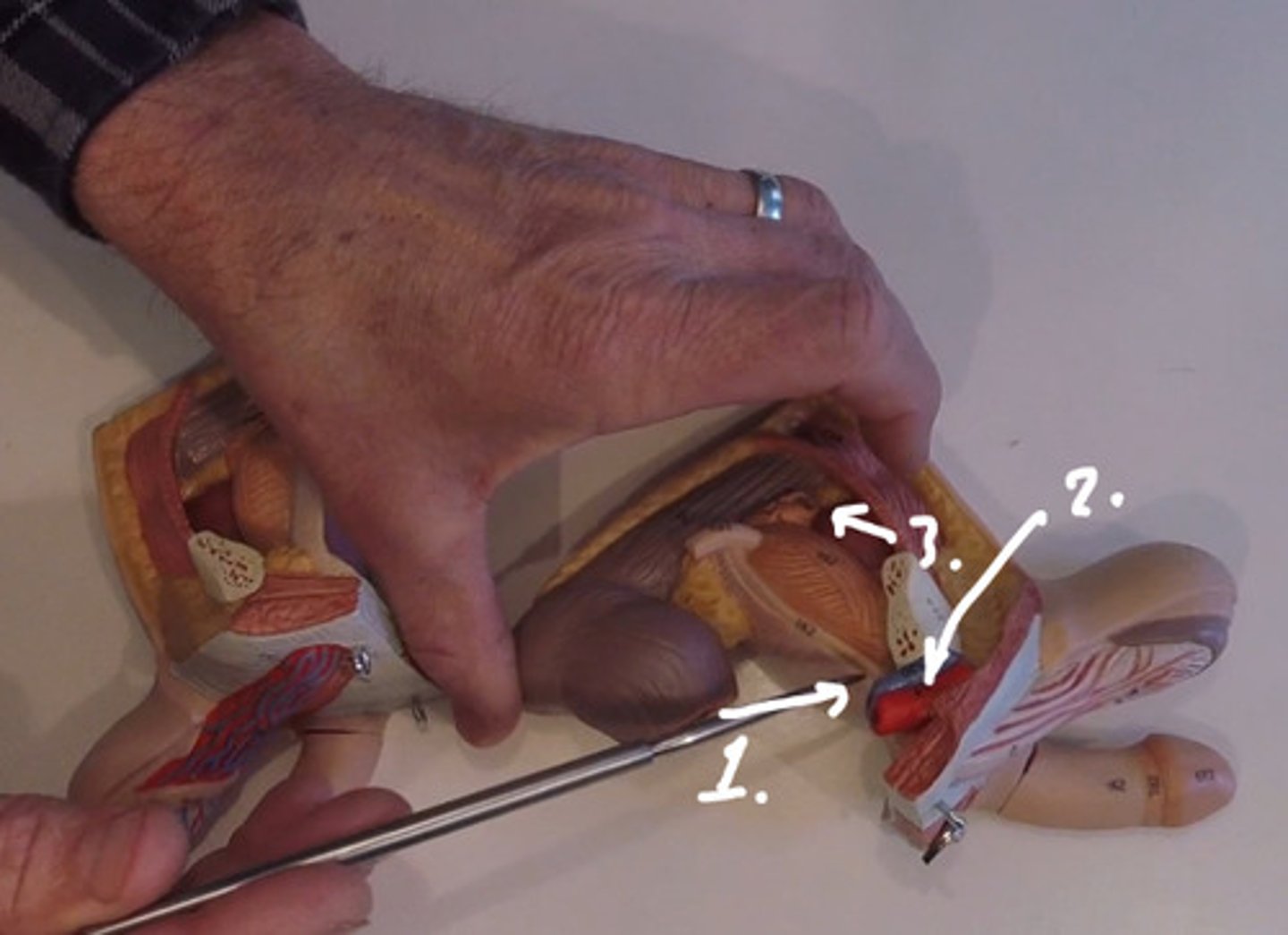Final Practical Digestive/Respiratory/Urinary System Models
1/44
There's no tags or description
Looks like no tags are added yet.
Name | Mastery | Learn | Test | Matching | Spaced |
|---|
No study sessions yet.
45 Terms
1. nasopharynx
2. oropharynx
3. laryngopharynx
4. esophagus
5. glottis
6. cardia
7. stomach
8. pylorus (sphincter)
9. duodenum
#1-9
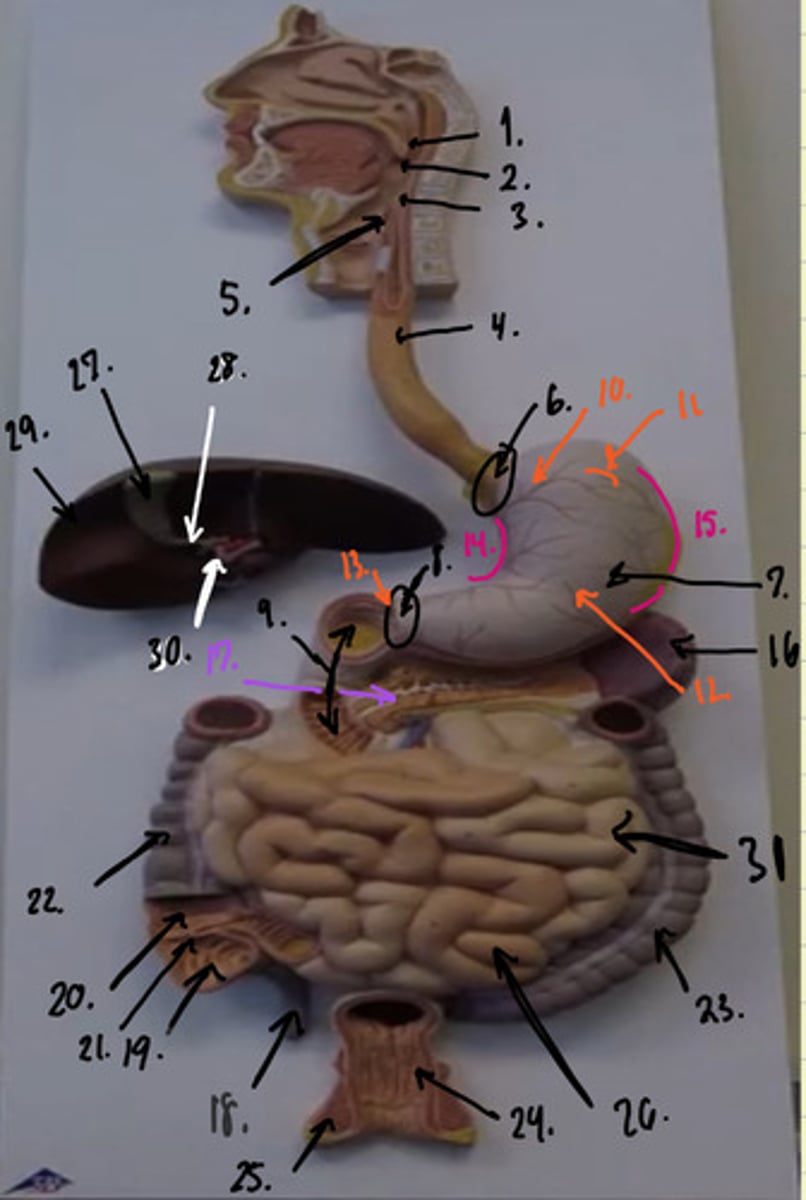
10. cardiac region
11. fundus
12. body region
13. pyloric region
14. lesser curvature
15. greater curvature
16. spleen
17. pancreas
18. appendix
19. ceecum
20. ilium
#10-20
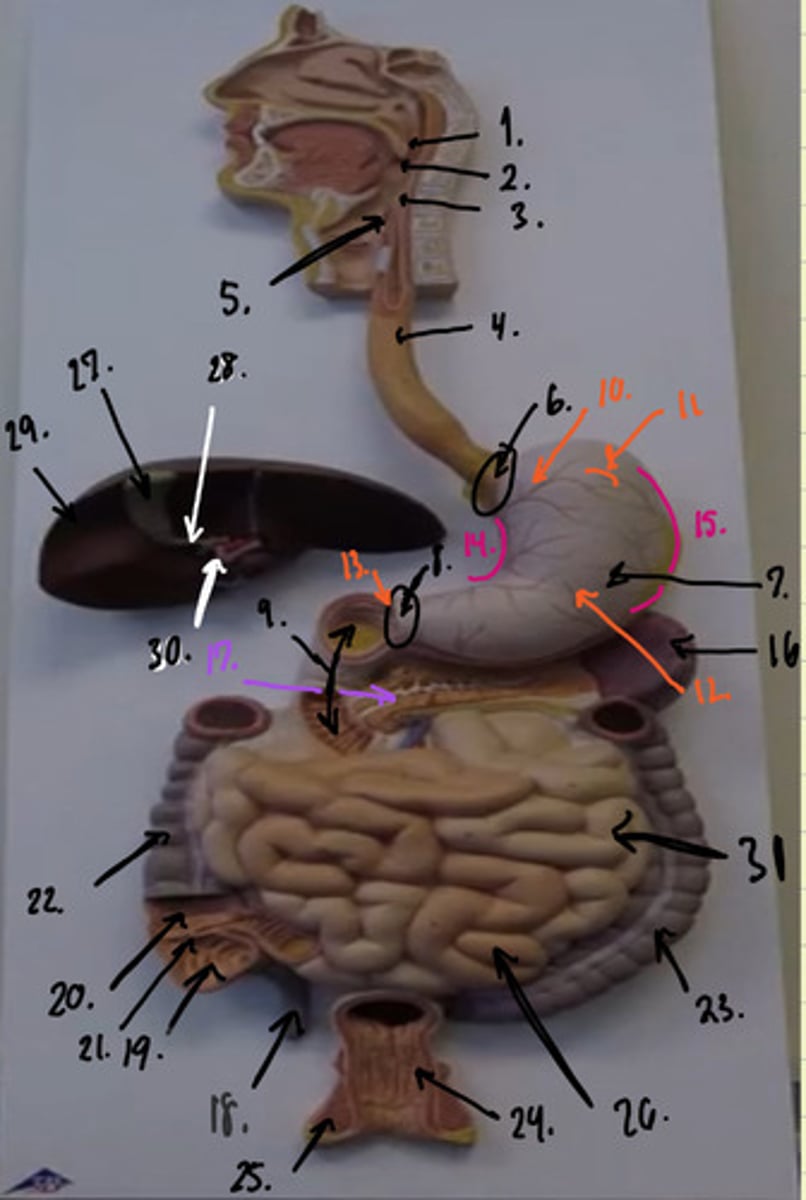
21. ilioceecal valve
22. ascending colon
23. descending colon
24. rectum
25. pelvic floor
26. jejunum
27. gallbladder
28. cystic duct
29. liver
30. bile duct
31. ilium
extra info:
- bile duct joins posteriorly to the stomach
- sigmoid is more posterior & it joins to da rectum
- transverse colon is removed frm this model
#21-31
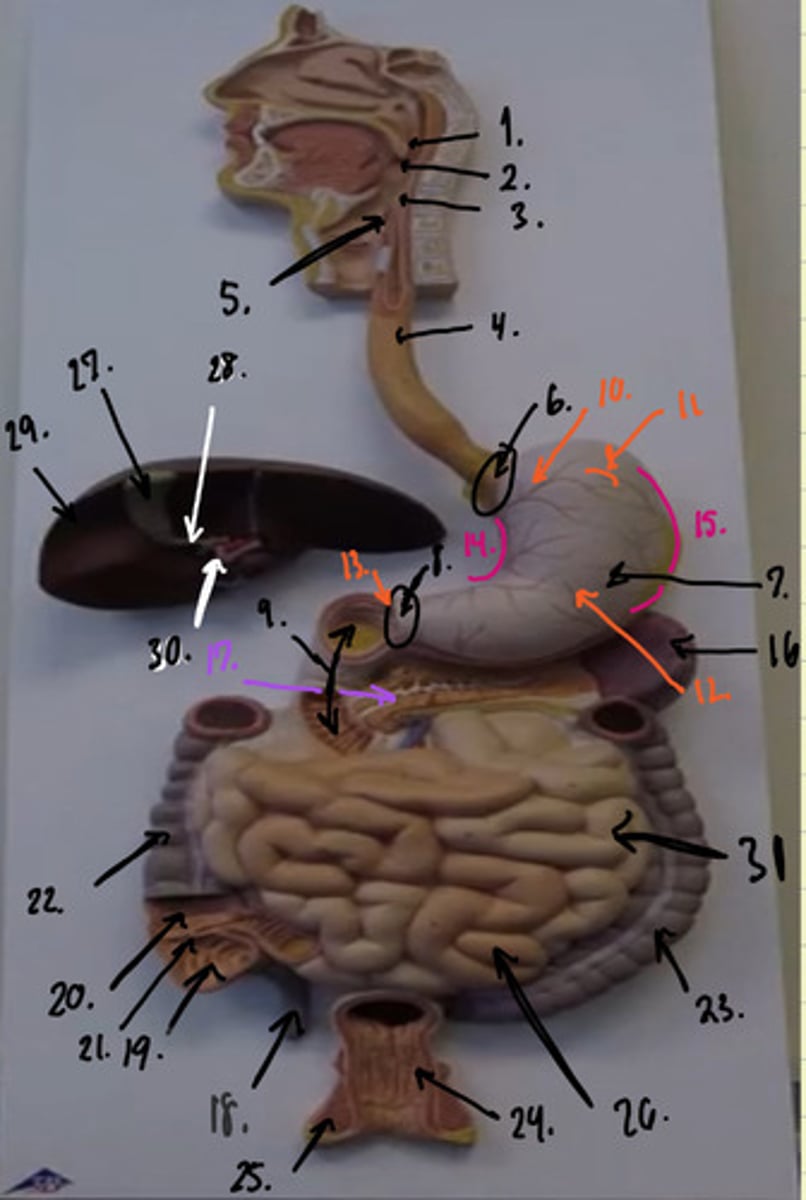
1. bile duct
2. cystic duct
3. duodenum
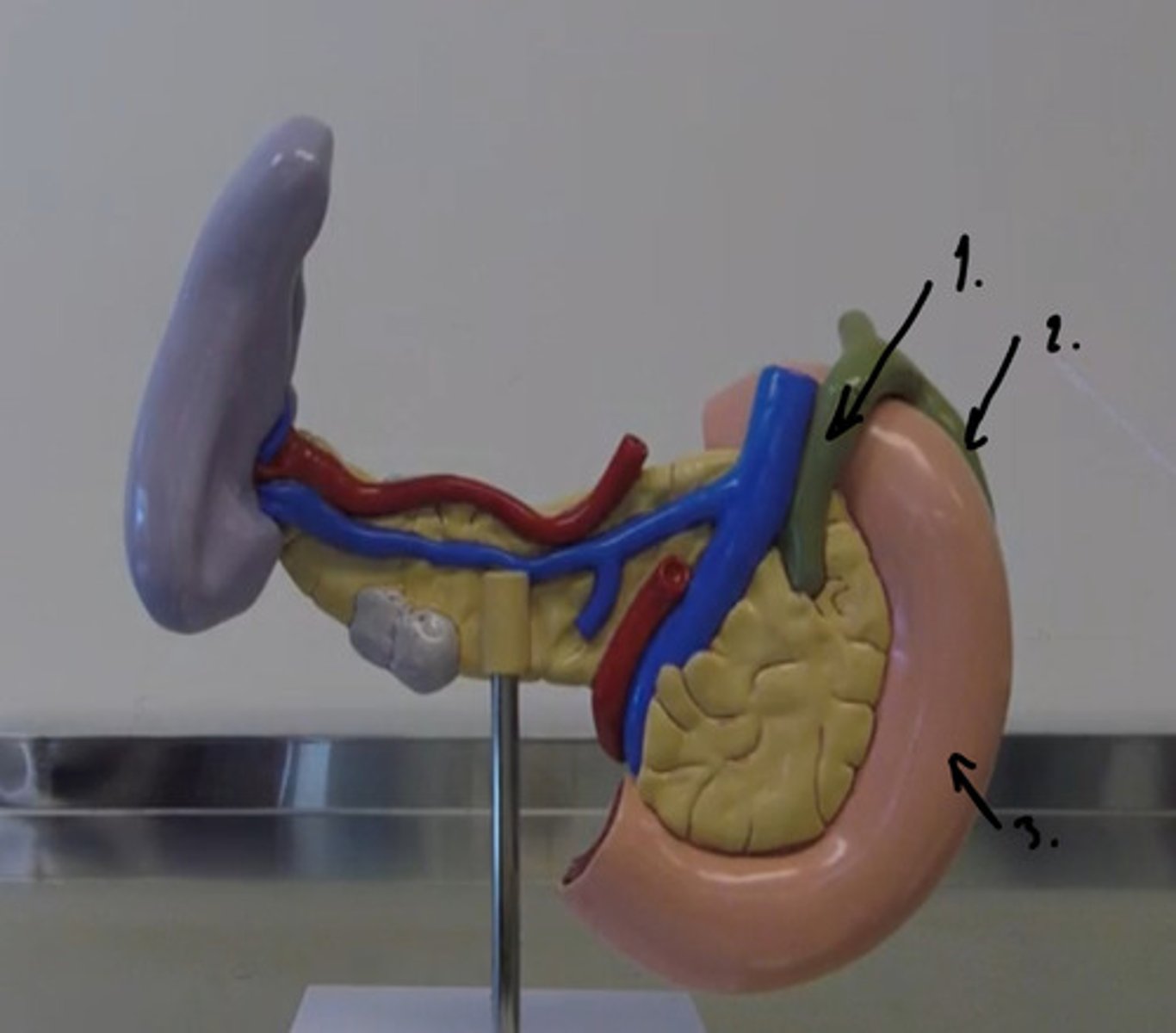
1. pancreatic ducts
2. duodenum
3. bile ducts
4. systic ducts
5. gallbladder
6. spleen
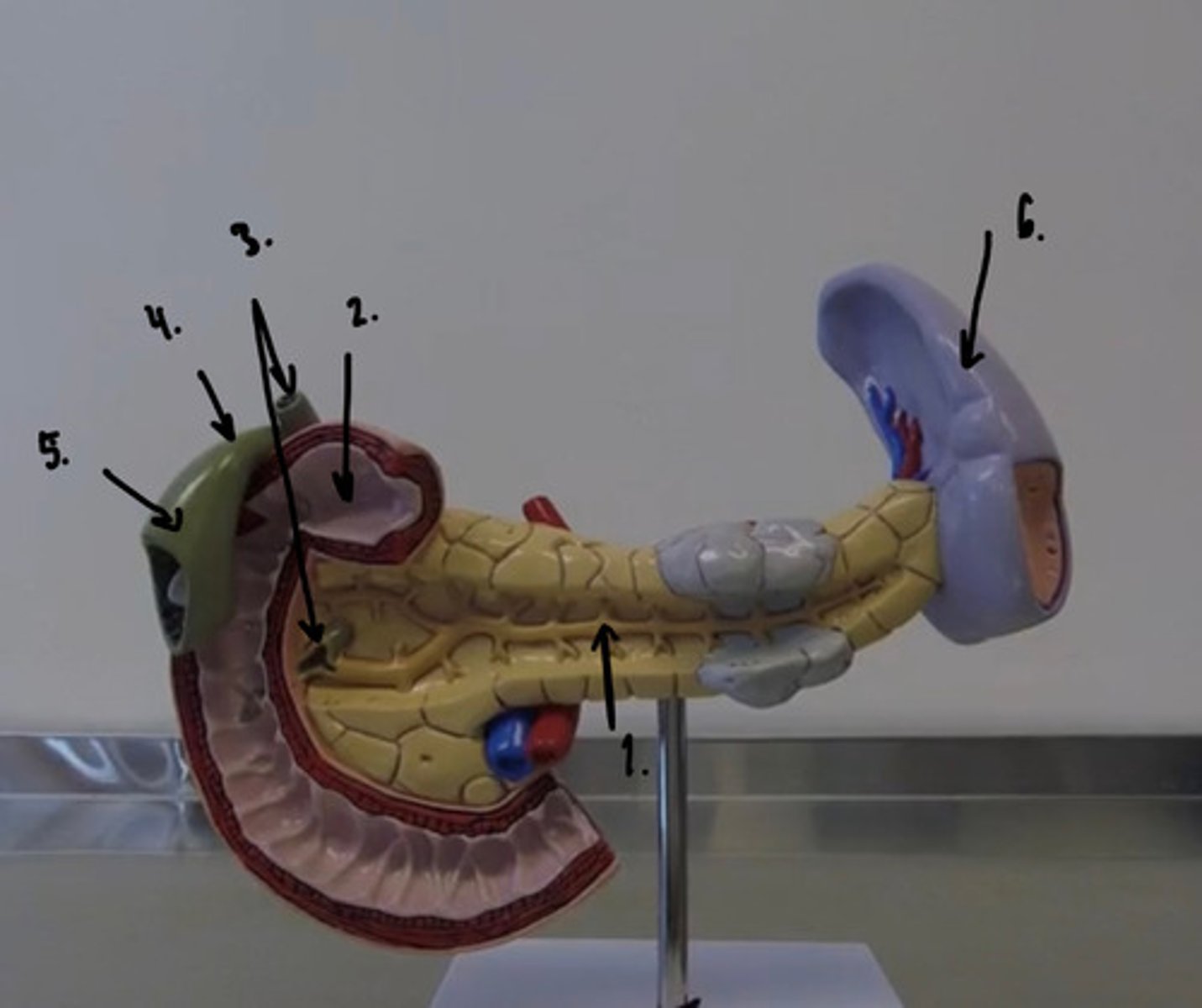
2. IVC
3. gallbladder
4. cystic duct
5. common bile duct
6. hepatic duct
extra info:
- #4 brings bile OUT of duodenum
- #5 brings bile INTO duodenum
- #2 passes thru diaphragm + liver
- #5 goes to duodenum
- #6 brings bile from liver --> bile duct --> small intestine
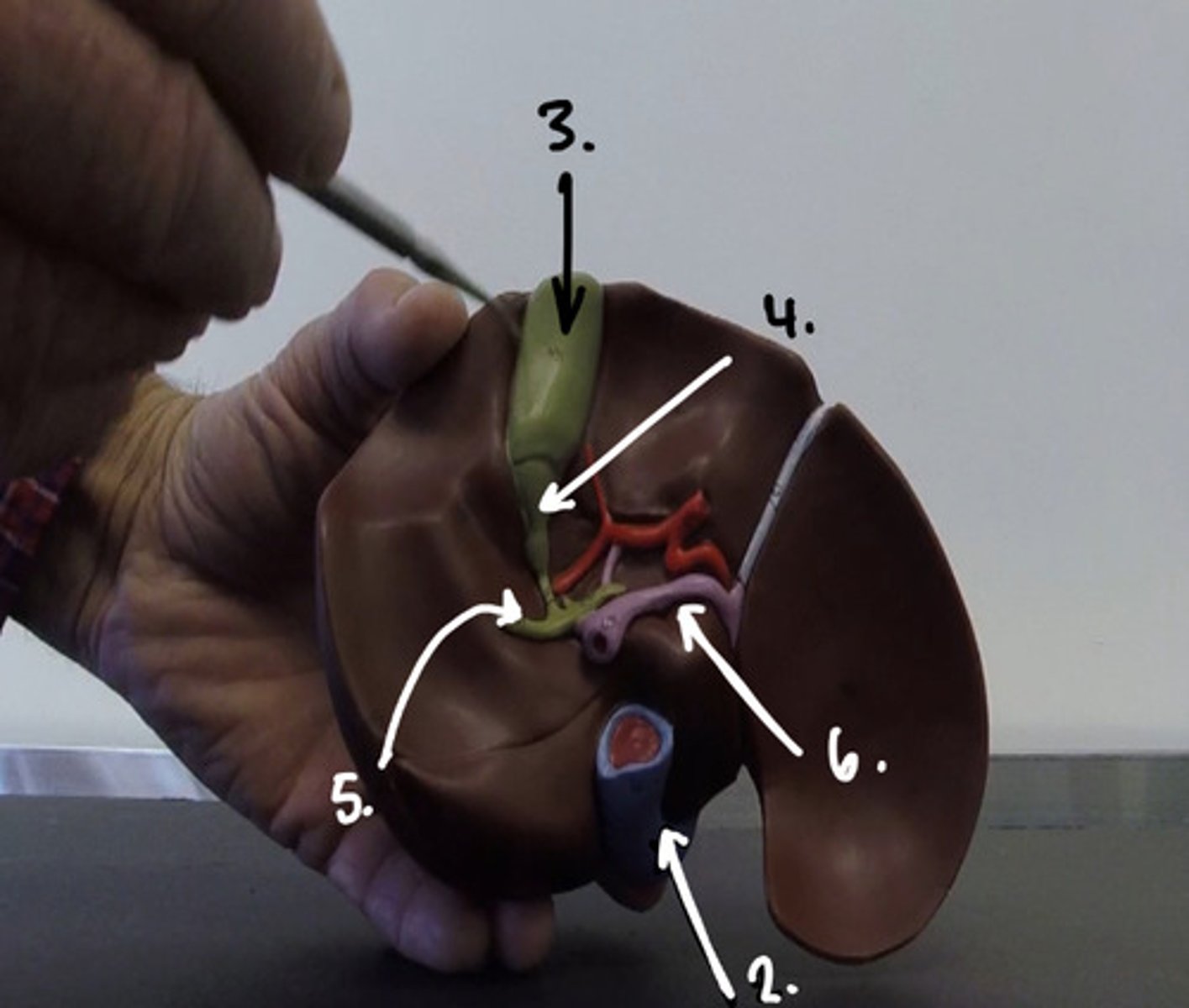
1. spleen
2. pancreas
3. small intestine
4. spleen
5. IVC
6. hepatic ducts
7. Hepatic Portal System
#1-7
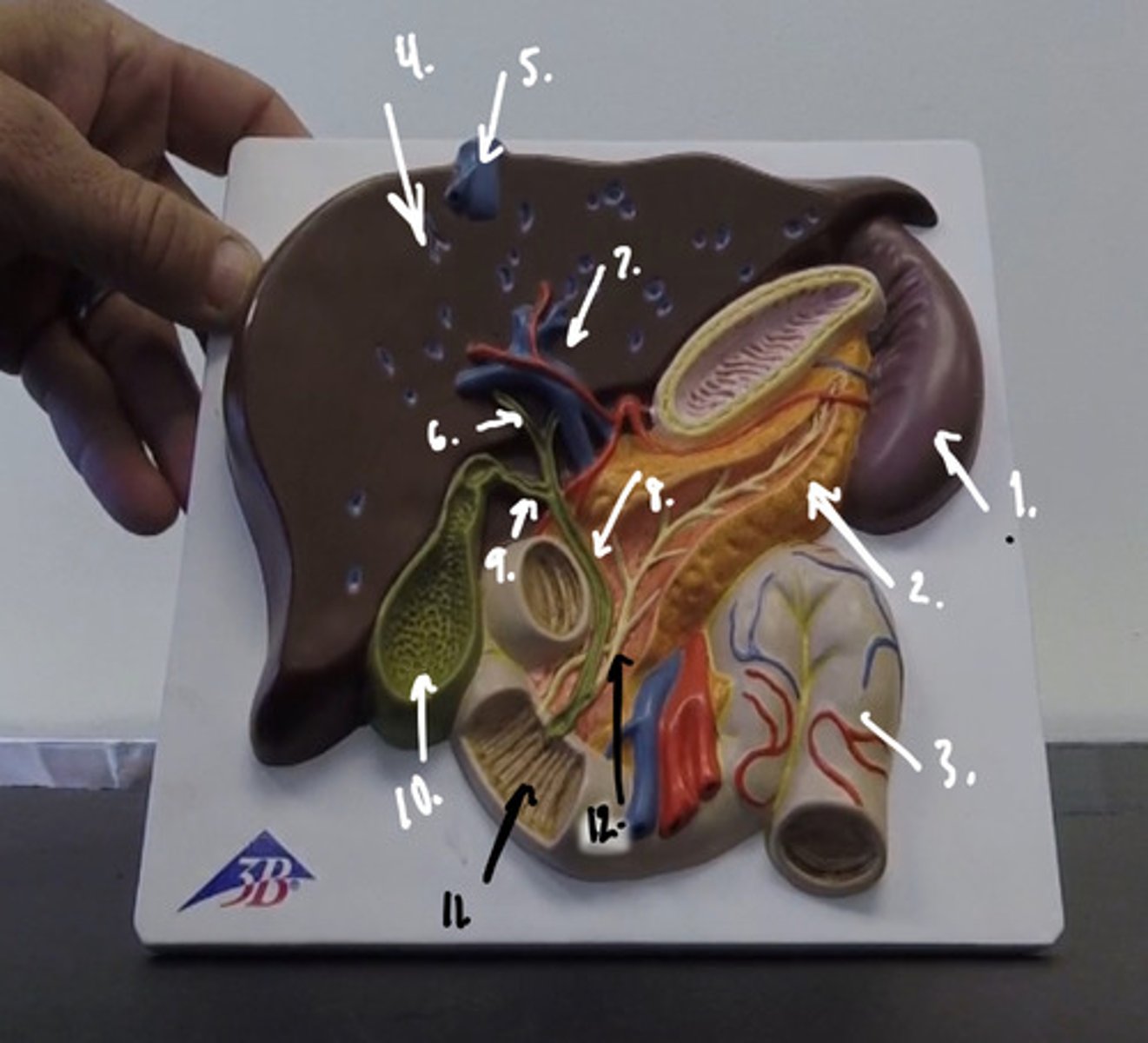
8. bile duct
9. cystic duct
10. gallbladder
11. duodenum
12. pancreatic duct
extra info:
- #11 drains w pancreatic duct + bile duct
#8-12
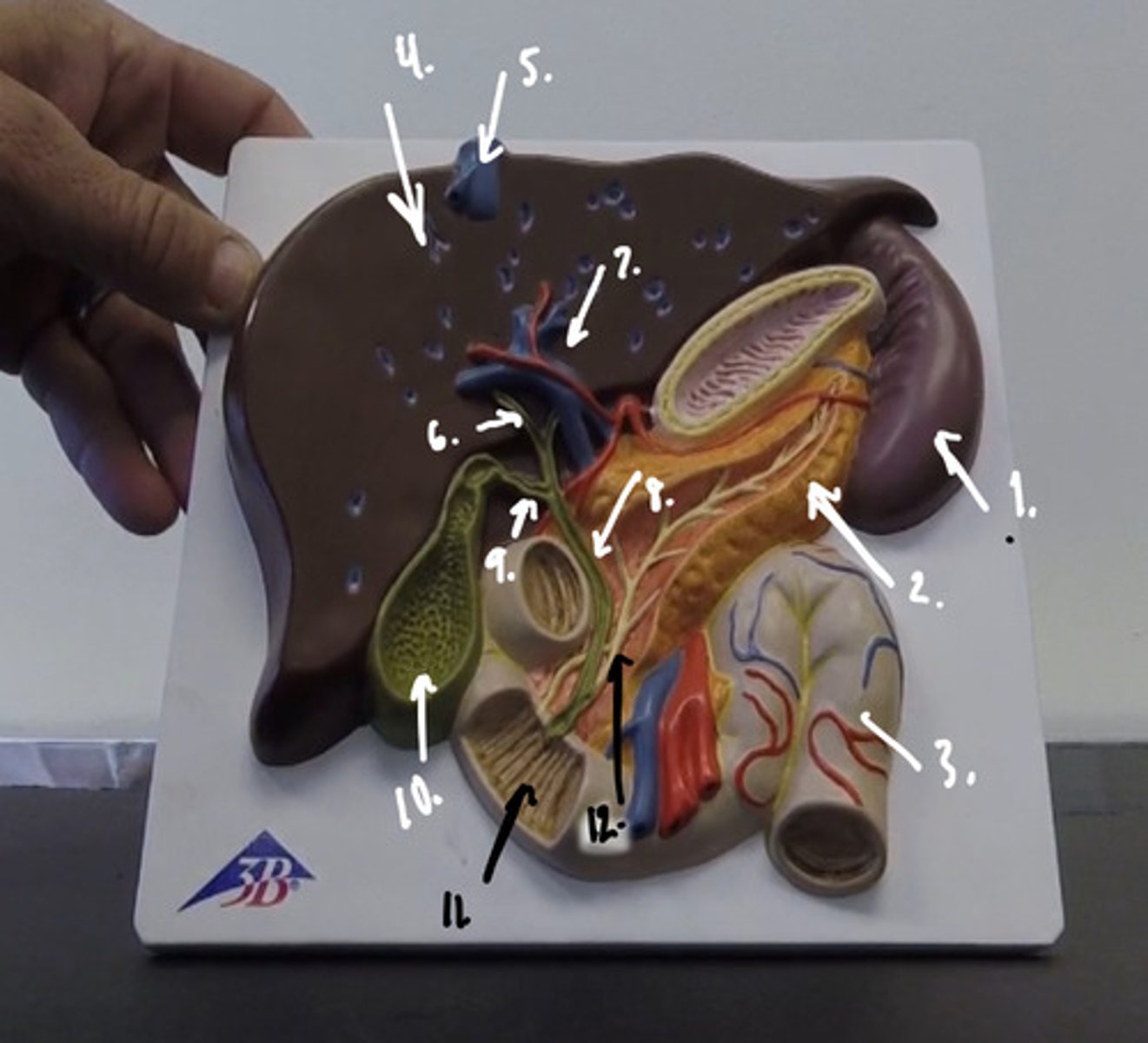
1. parotid gland/duct (type of salivary gland)
*parotid gland goes into oral cavity
*on this model esophagus runs behind the trachea & the heart
* cannot see oral
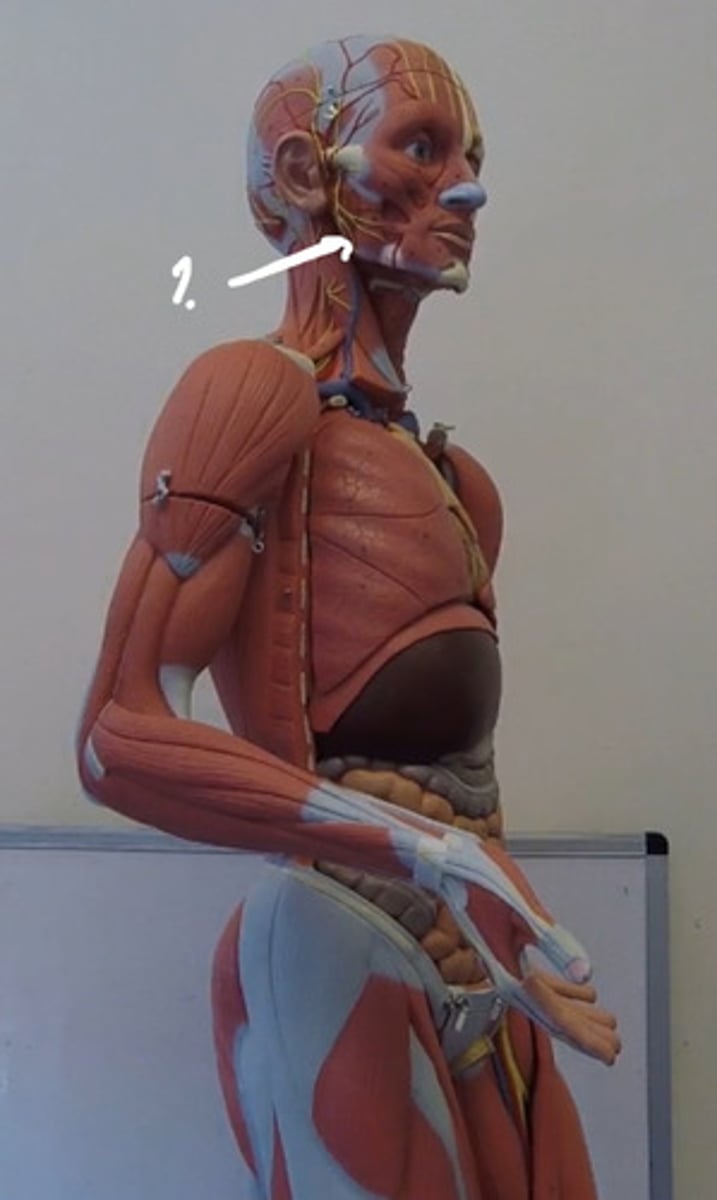
1. IVC
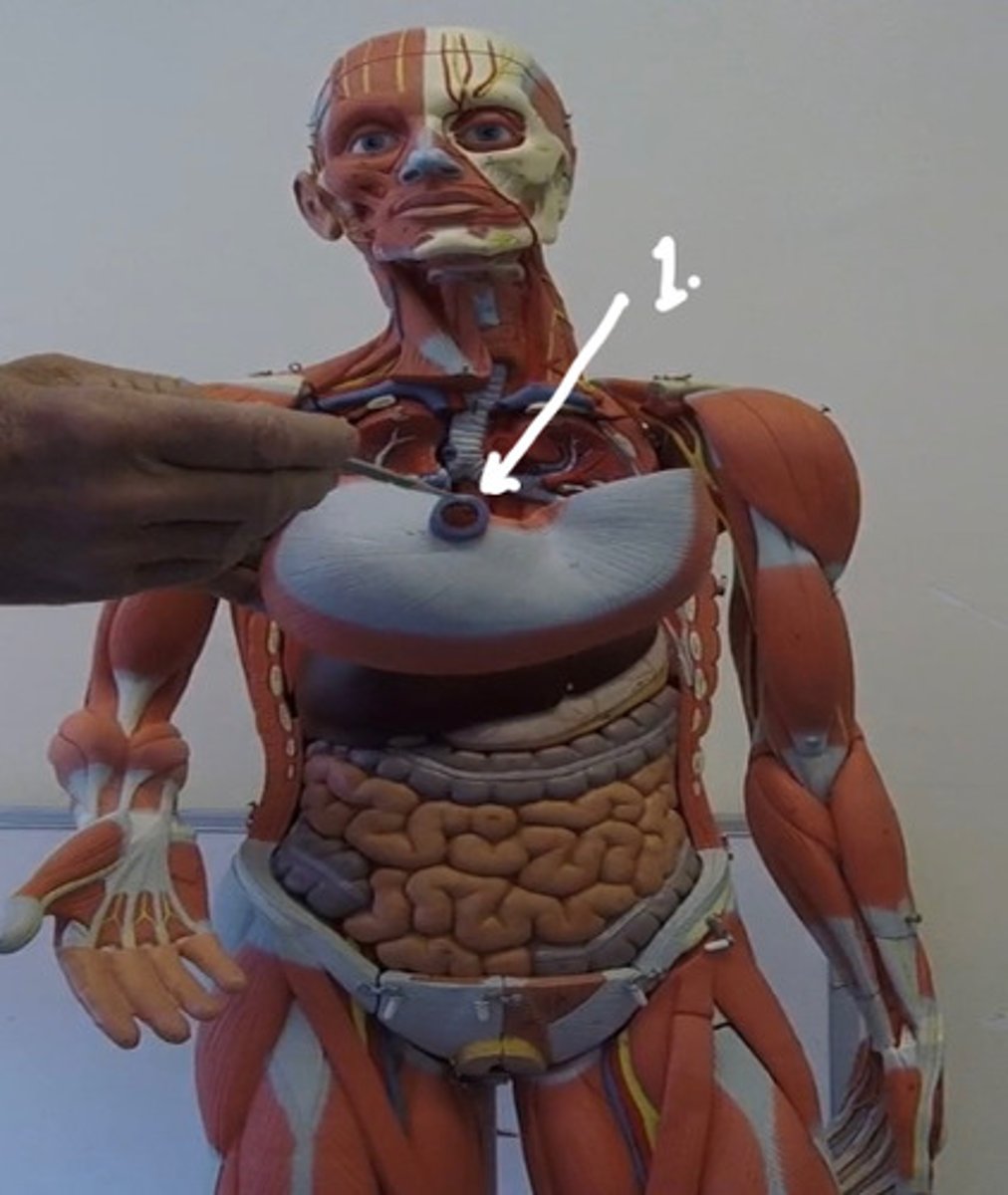
1. esophagus
2. trachea
3. diaphragm
4. liver
5. central tendon of diaphragm
extra info:
- esophagus connects 2 stomach
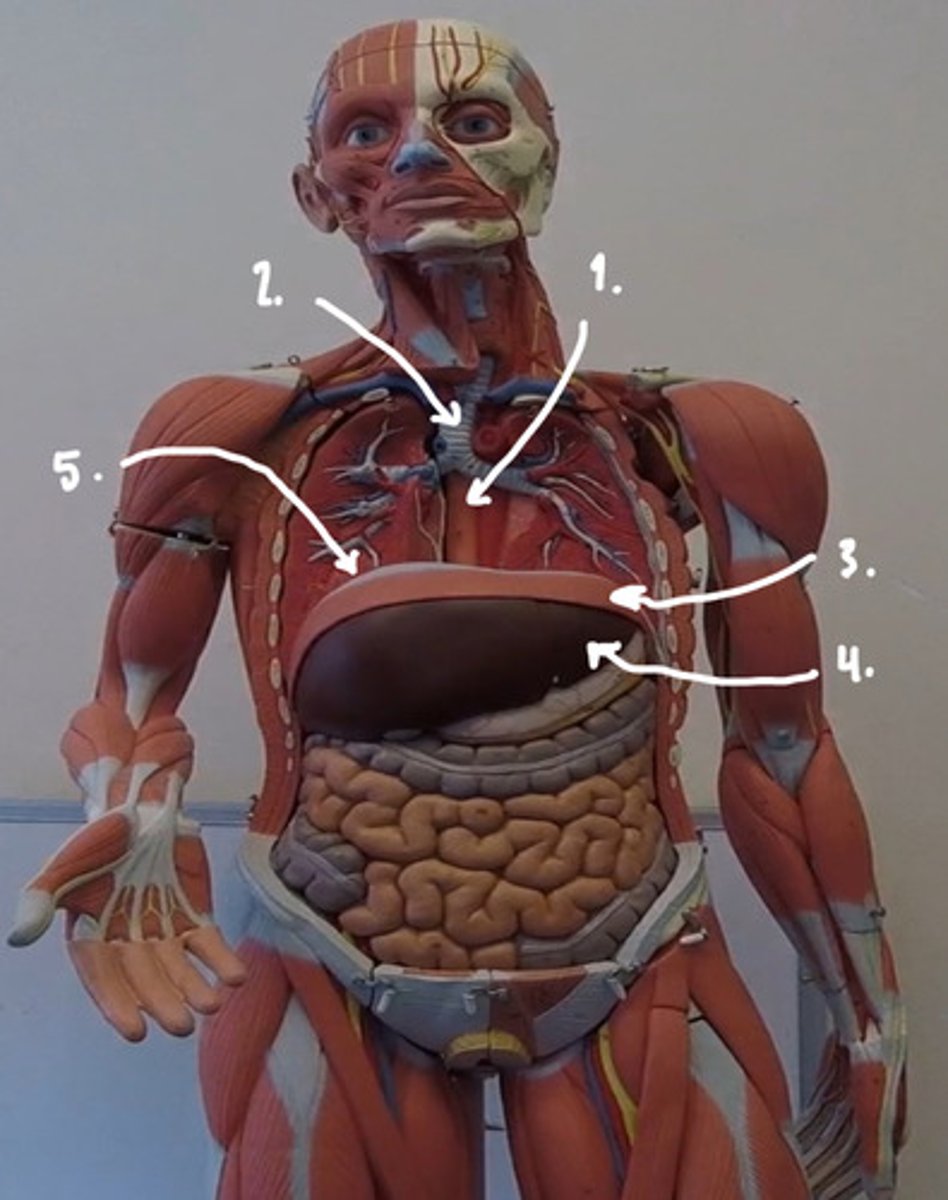
1. gallbladder
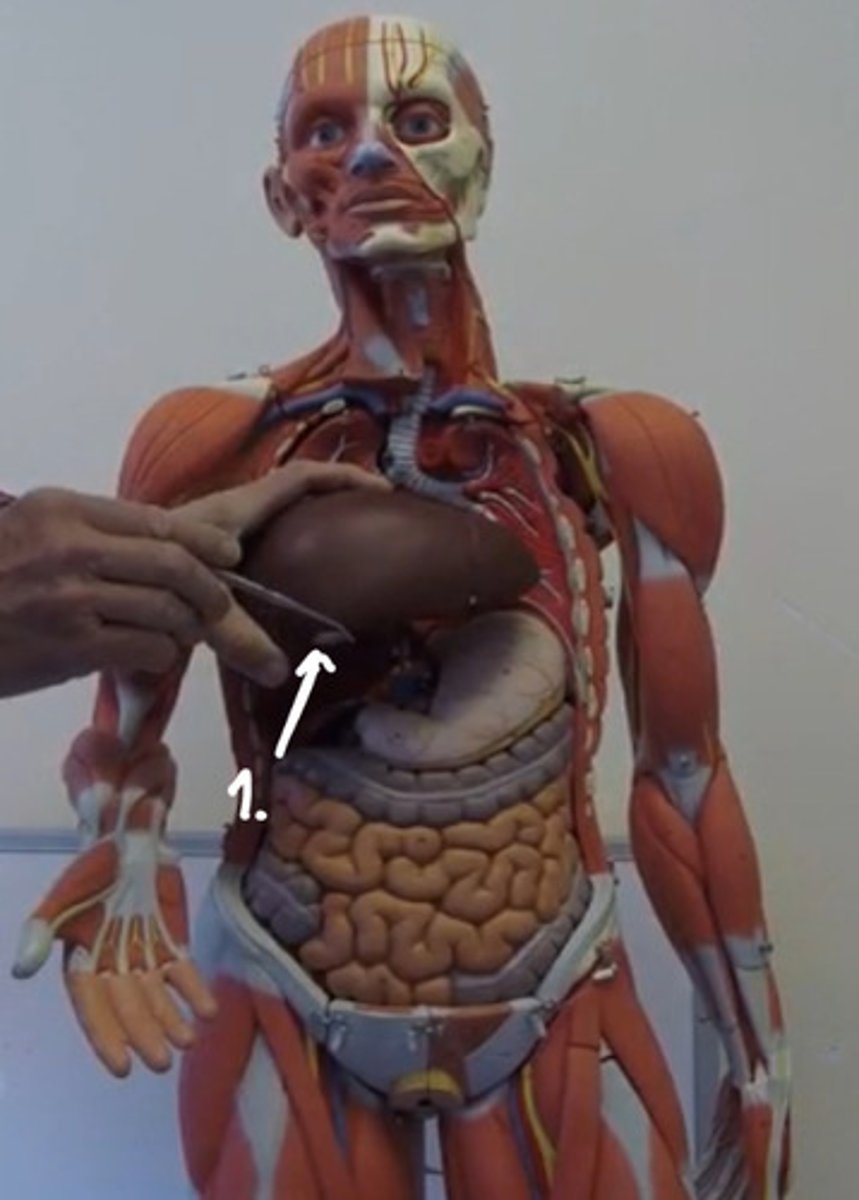
1. lesser curvature
2. greater curvature
3. cardiac region
4. body region
5. pyloric region (w da pyloric valve)
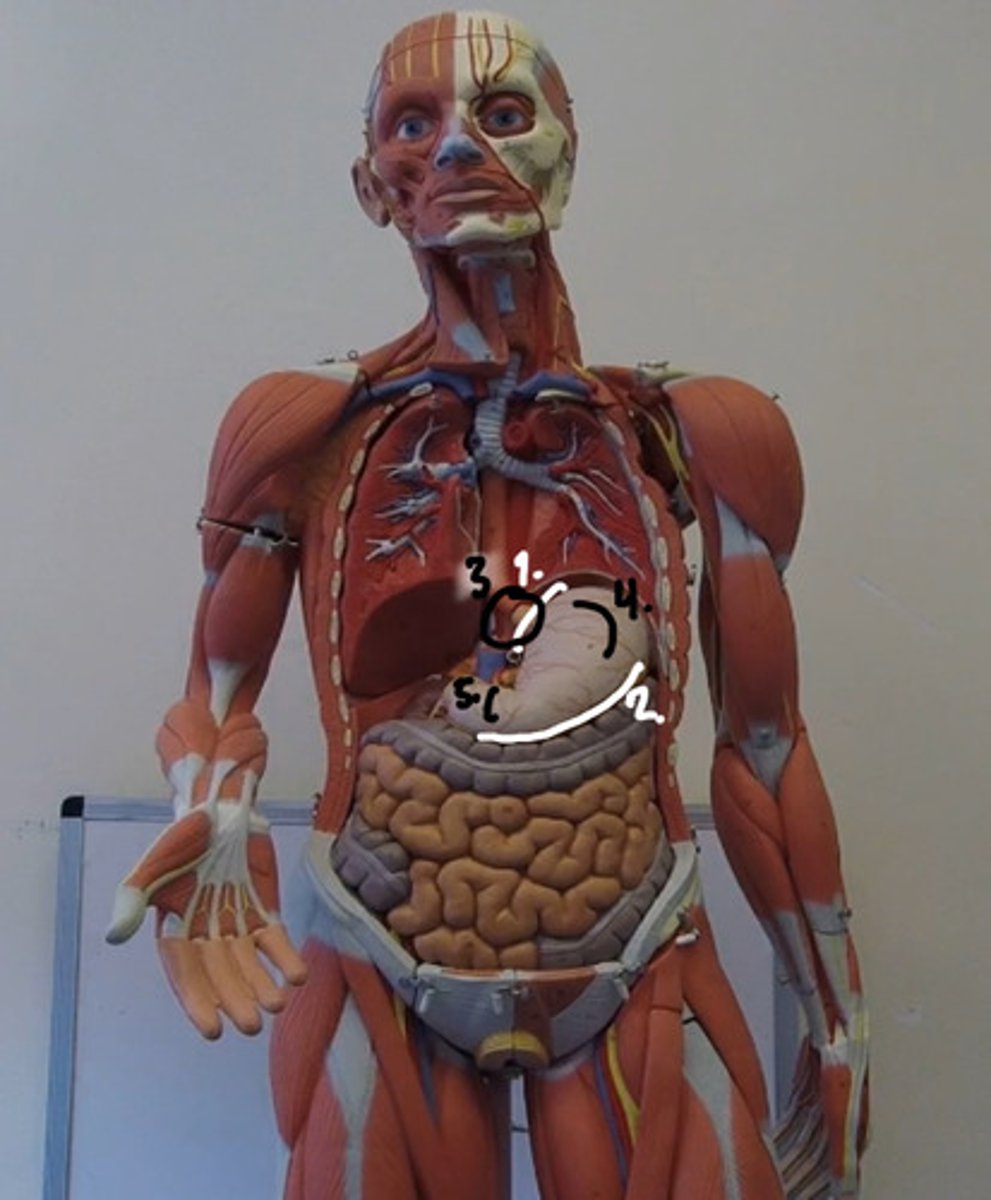
1. pyloric valve
2. cardiac valve (betw esophagus & stomach)
3.
**ruggae - the surface of the interior stomach - allows stomach to expand
(bladder & vagina has reggae too)
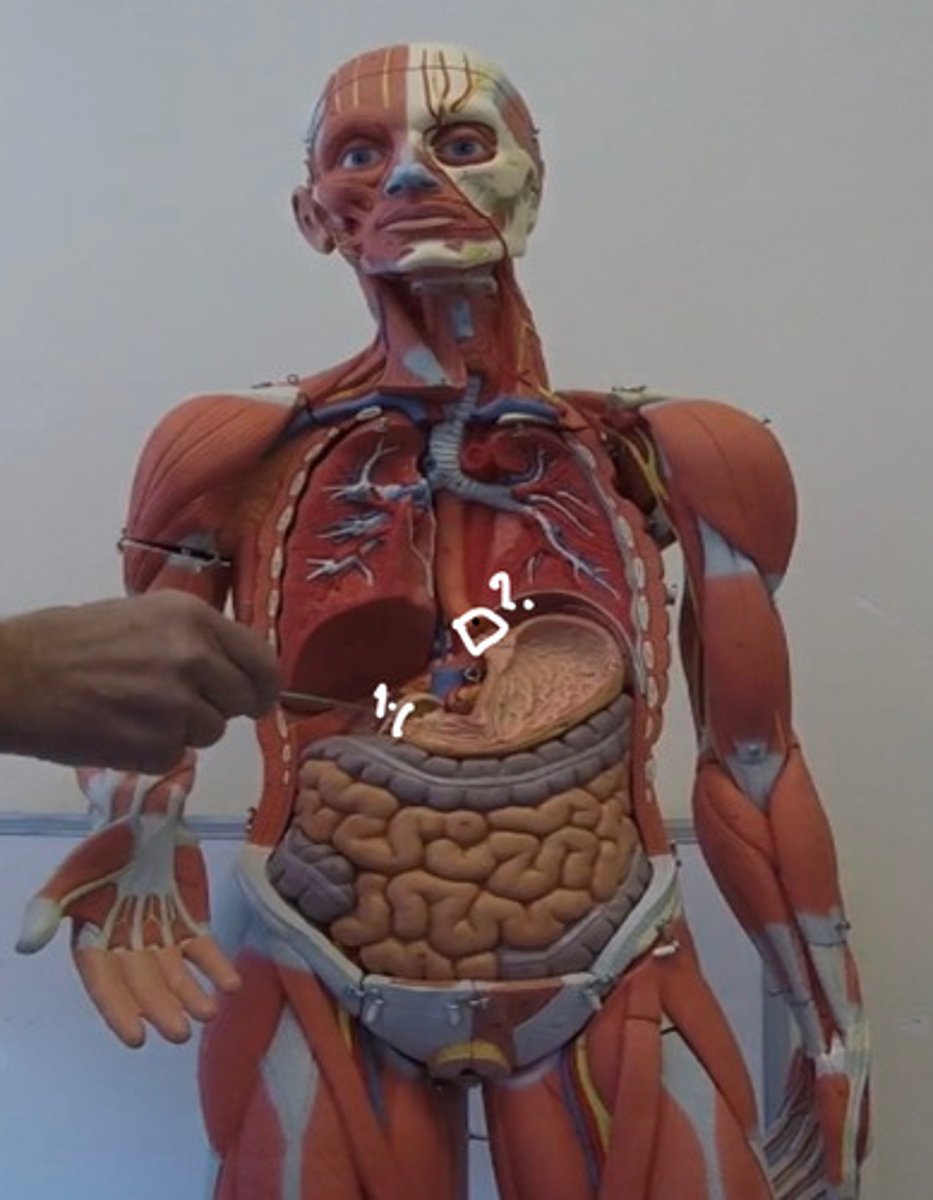
1. longitudinal
2. circular
3. oblique
3 layers of muscle on the stomach:
1. opening into duodenum
2. pancreas
3. spleen
4. cecum
5. ascending colon
6. transverse colon
7. descending colon
*splenic artery & vein in under the spleenn
**pancreatic duct comes in & enters duodenum Large intestine:
- Transverse colon
- Descending colon
- Ascending colon
- Sigmoid colon
- Rectum
- Appendix + ceecum Small Intestine - Duodenum
- Jejunum
- Ileum
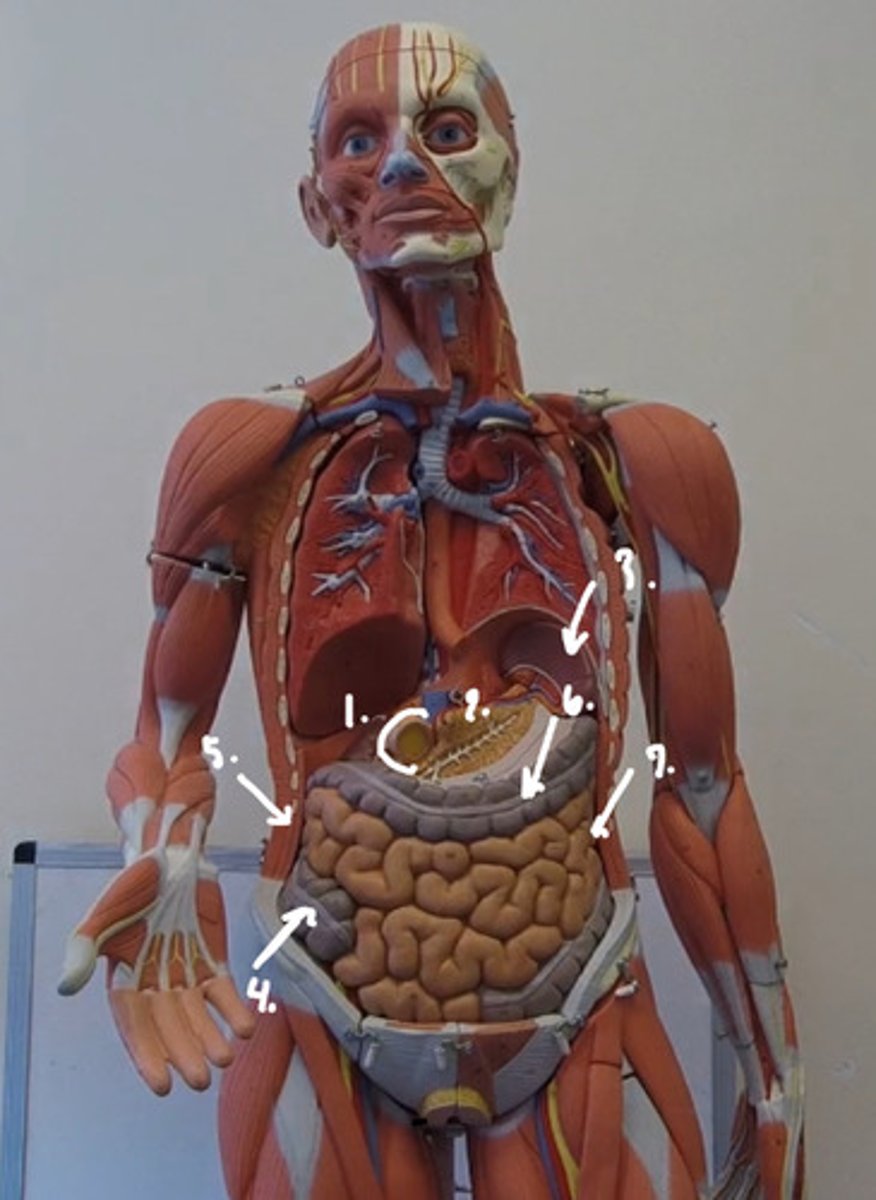
1. ilioceecum valve - cntrls movement from small ---> large intestine
*illium -- to cecum (1st part of large intestine)
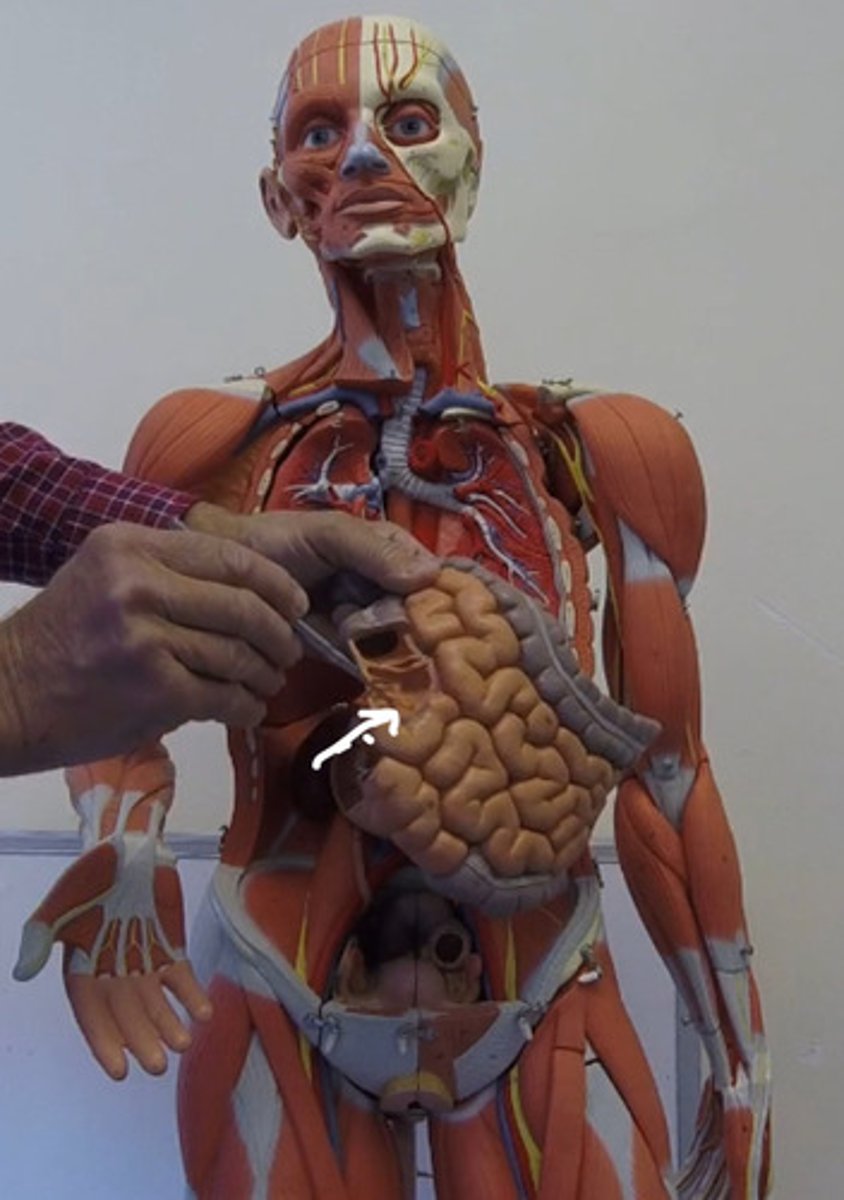
1. sigmoid colon (inserts into rectum)
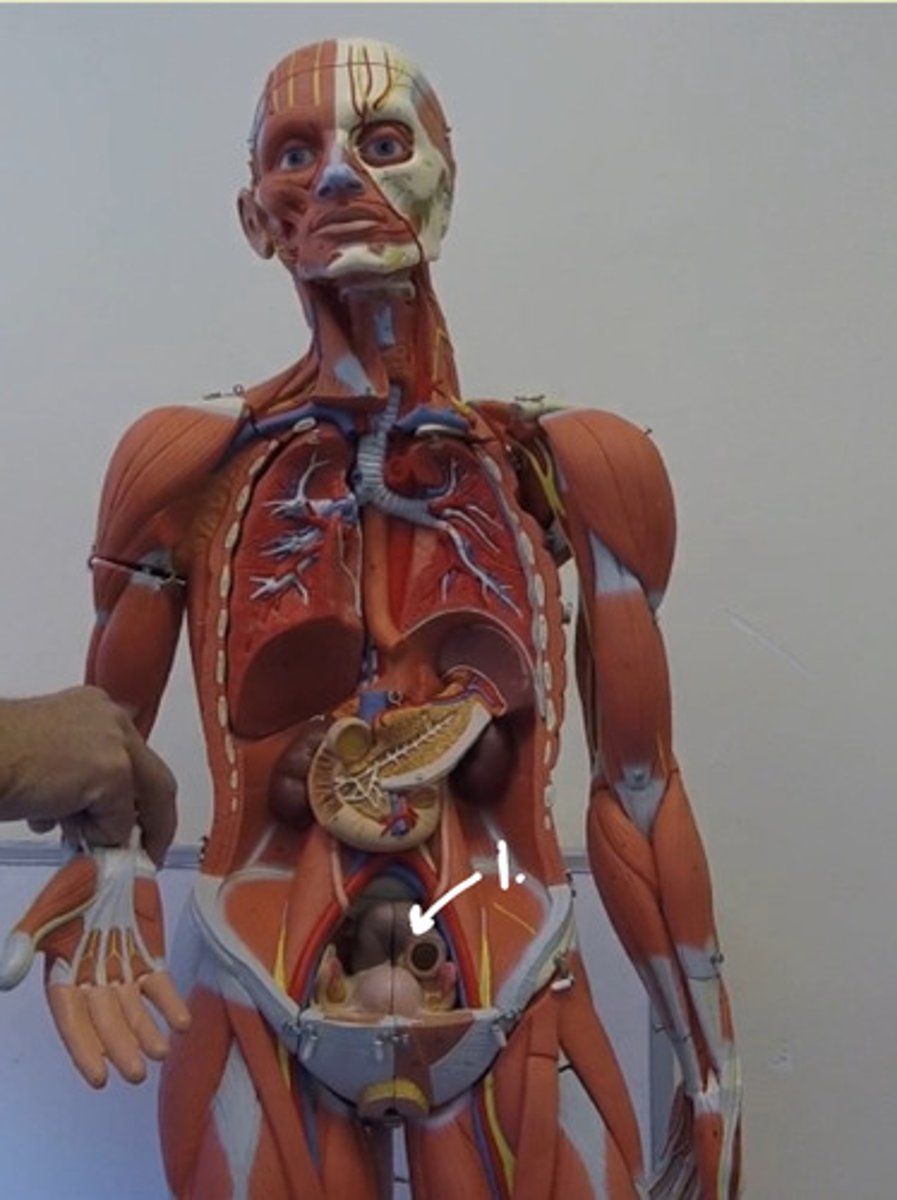
1. greater omentum
extra info:
- lesser omentum is on the lesser curvature (not present on the model)
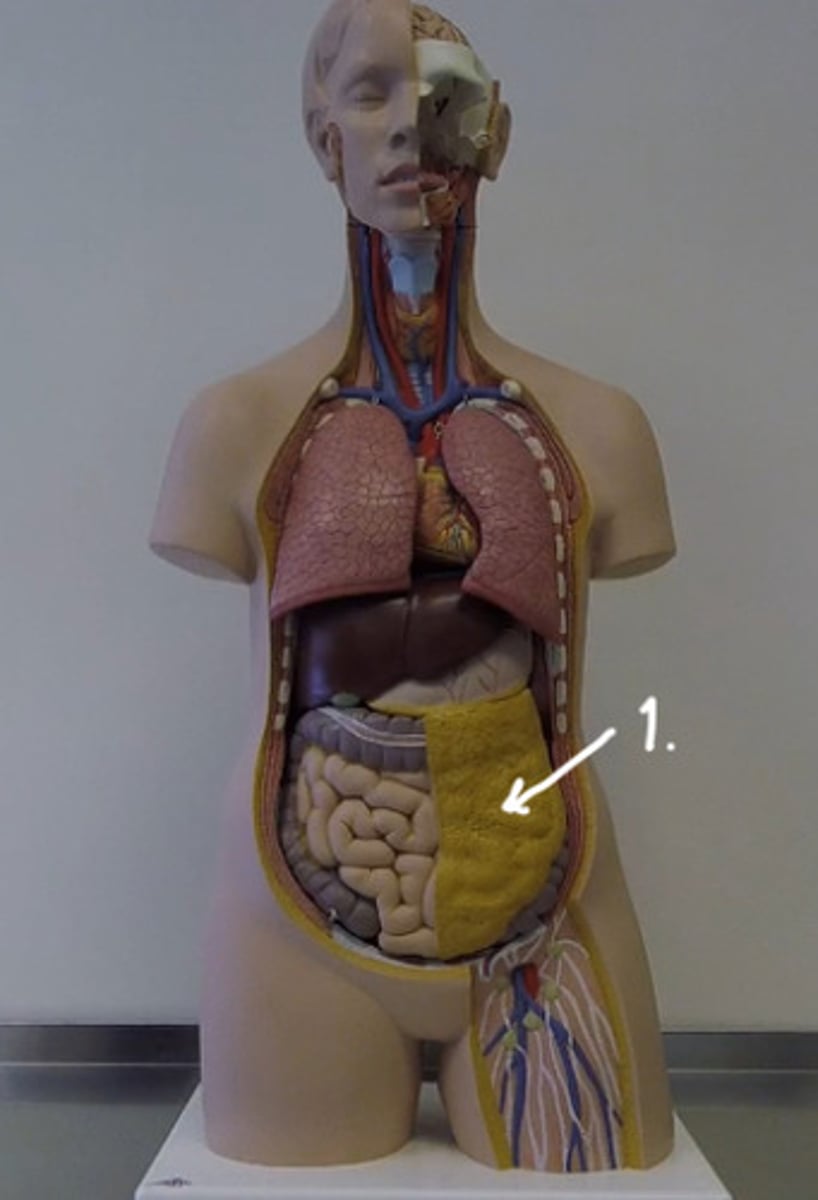
1. sigmoid colon
2. cecum
3. appendix
4. descending colon (curves & becomes #1)
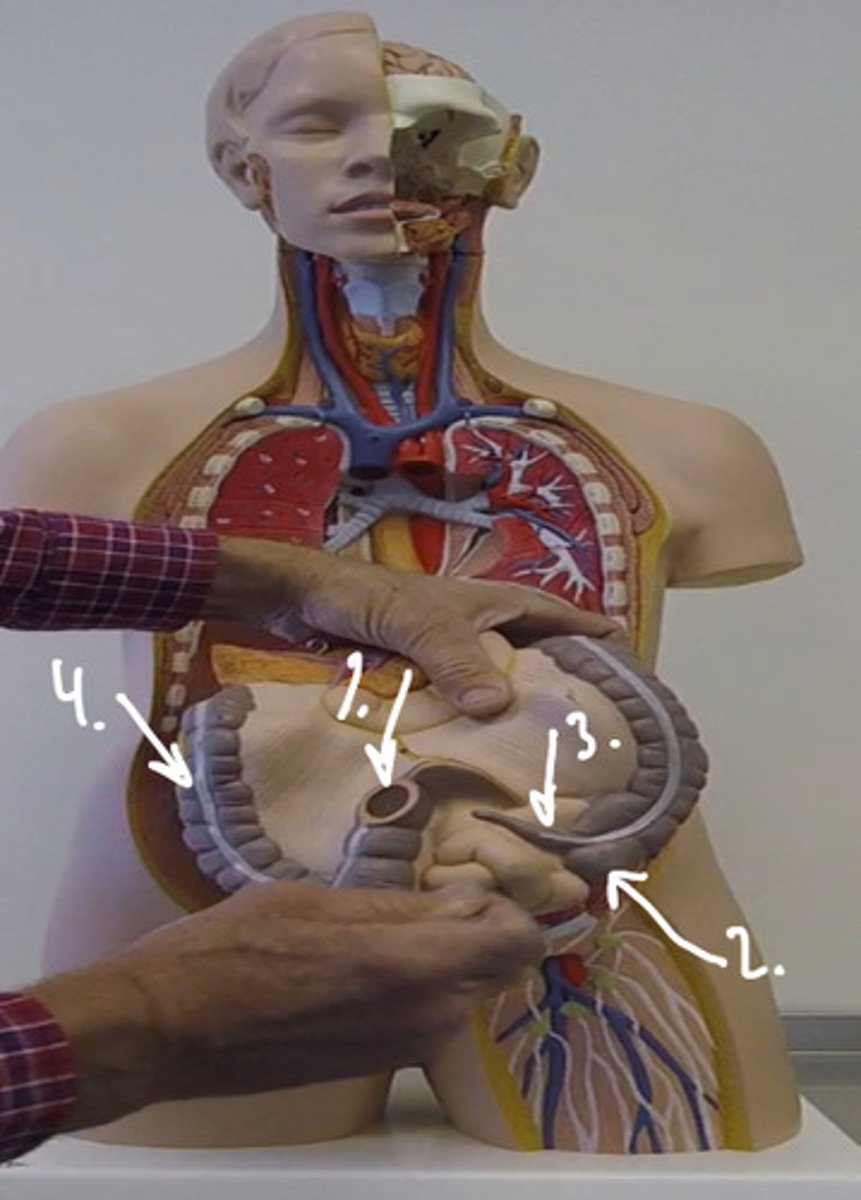
1. lung septums
2. thymus
extra info:
- thyroid gland goes across trachea
- #1 - part of immune system
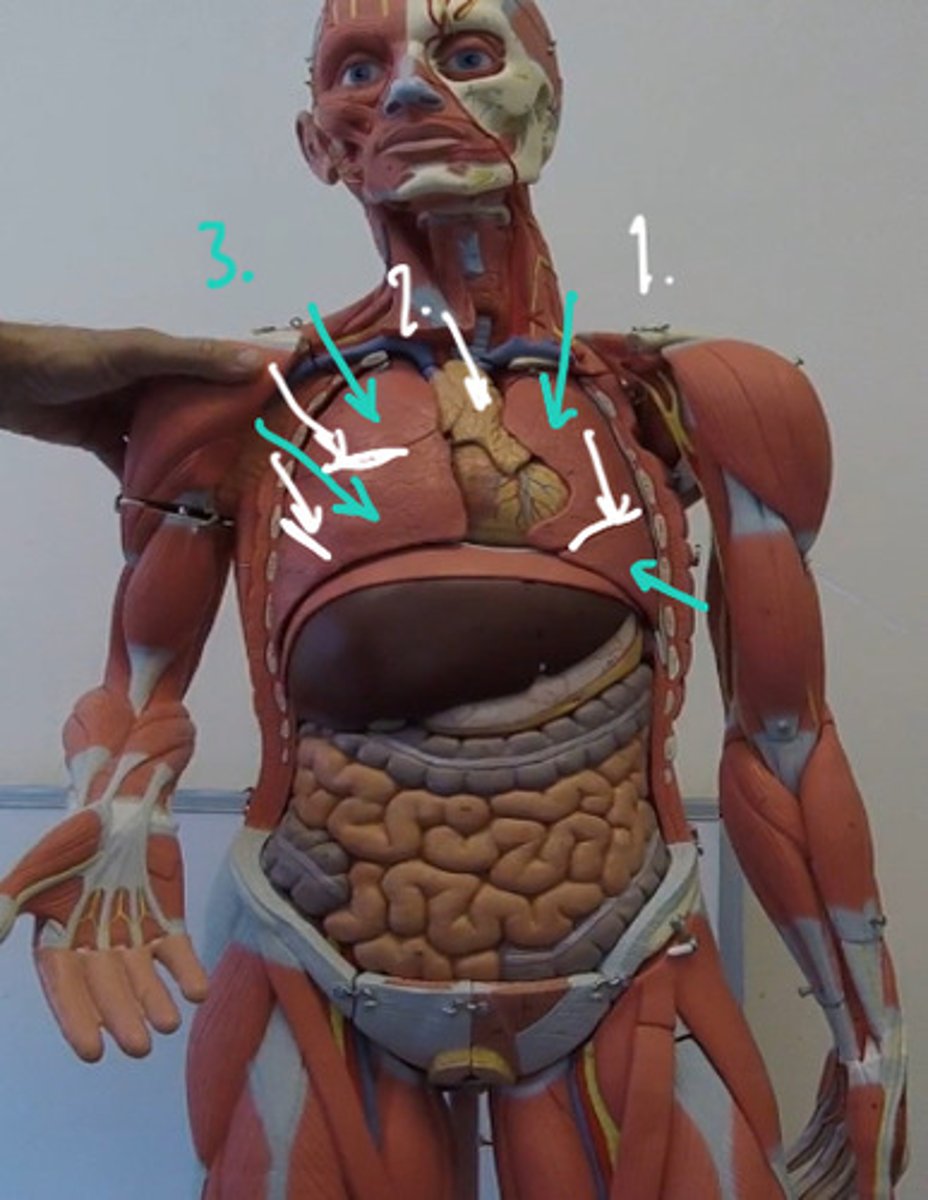
1. pulmonary arteries
2. trachea
3. left primary bronchiole
4. right primary bronchiole
5. left secondary bronchiole
6. tertiary bronchioles
7. diaphragm
8. central tendon
extra info:
- 3 2ndary bronchioles on right side
- 2 2ndary bronchioles on left side
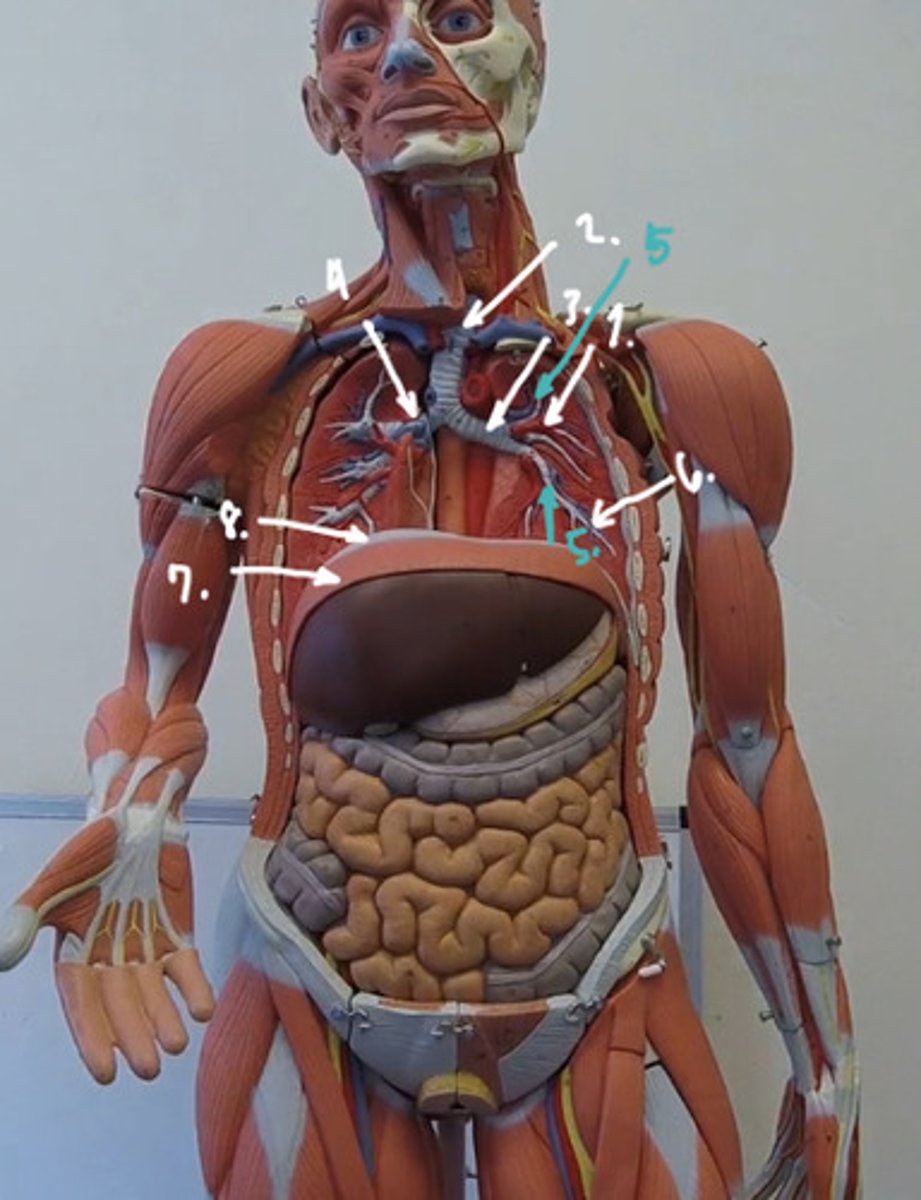
1. pleural membrane
2. intercostal veins + arteries (behind da lung)
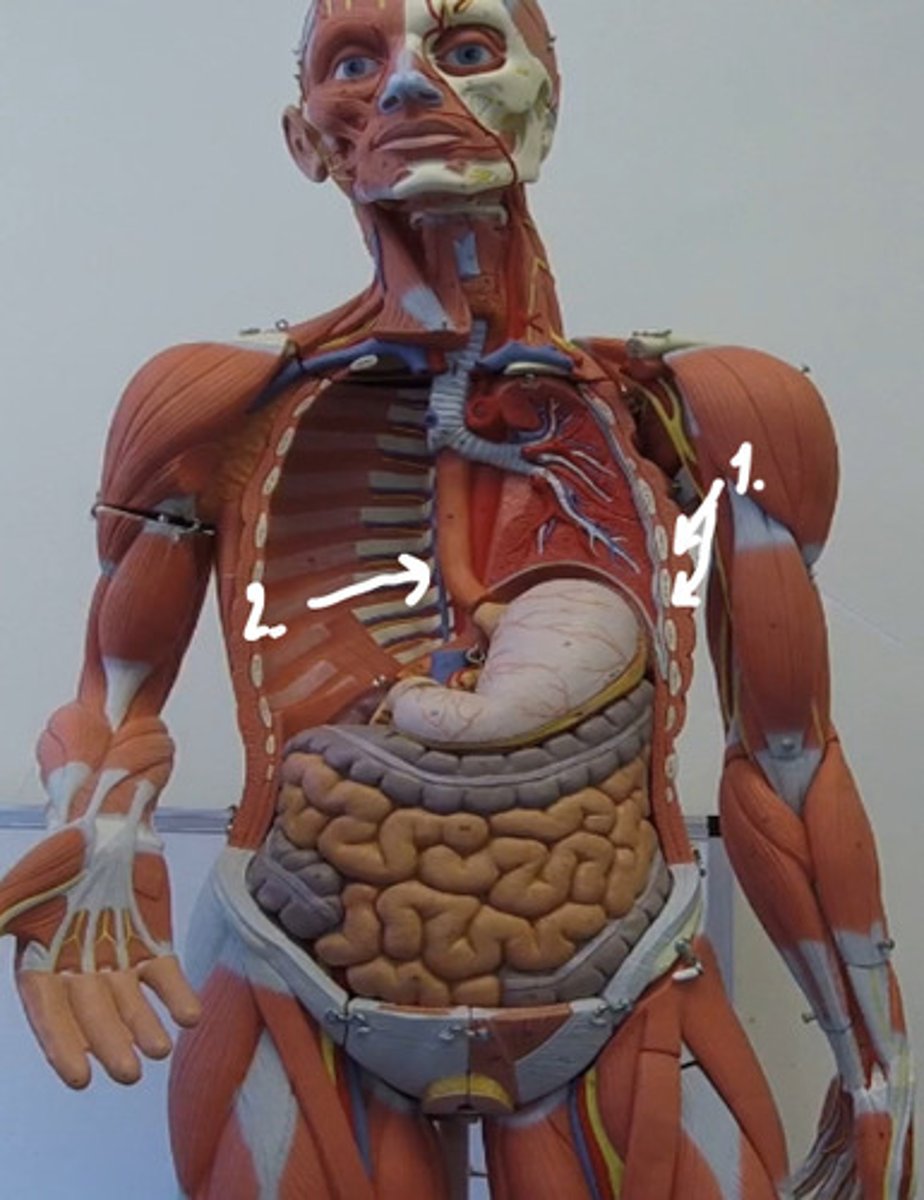
1. left pulmonary artery
2. right pulmonary artery
3. SVC
4. aorta
5. pulmonary veins
6. trachea
7. primary bronchiole
8. secondary bronchiole
9. tertiary bronchiole
10. lobules
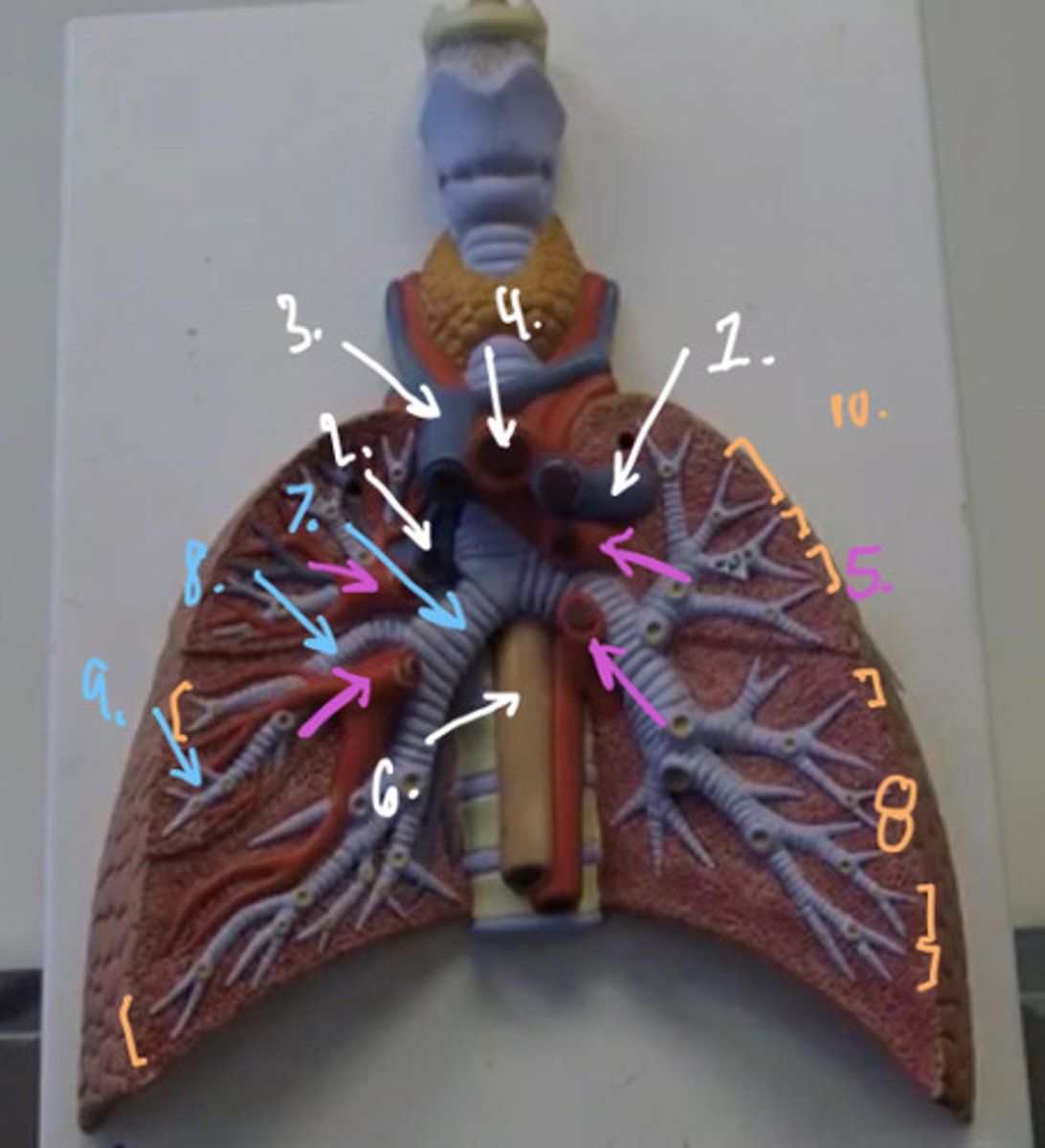
1. nasal cavity
2. nasopharynx
3. oral cavity
4. oropharynx
5. adenoids
6. palatine tonsil
7. laryngopharynx
8. esophagus
9. glottis
10. epiglottis
11. vestibular + vocal folds
extra info:
vestibular fold is superior -- vocal fold
vocal folds --> tone
blue = cartilage
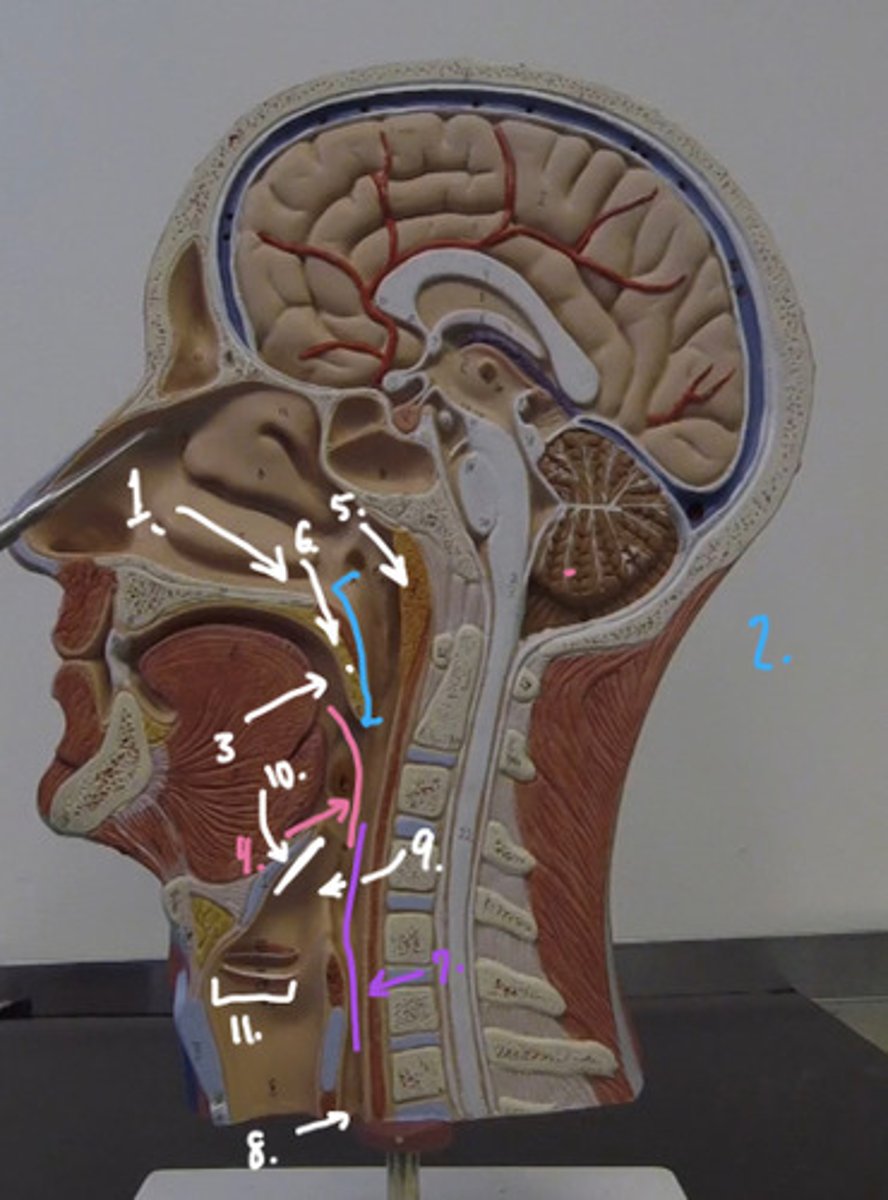
1. hyoid bones
2. thyroid cartilage
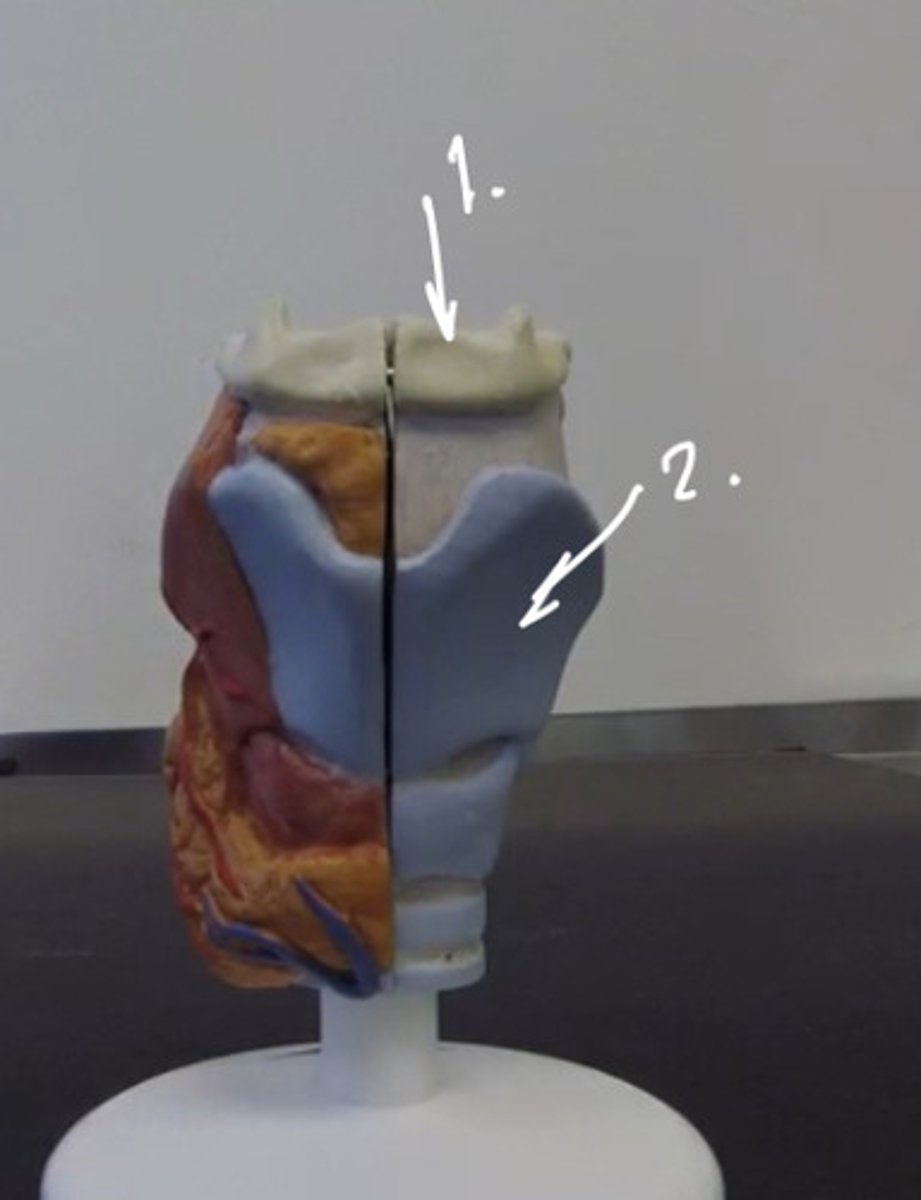
1. thyroid cartilage
2. hyoid bone
3. epiglottis
4. glottis
5. vestibule
6. vocal fold
7. vestibular fold
extra info:
- vocal folds = connective tissue
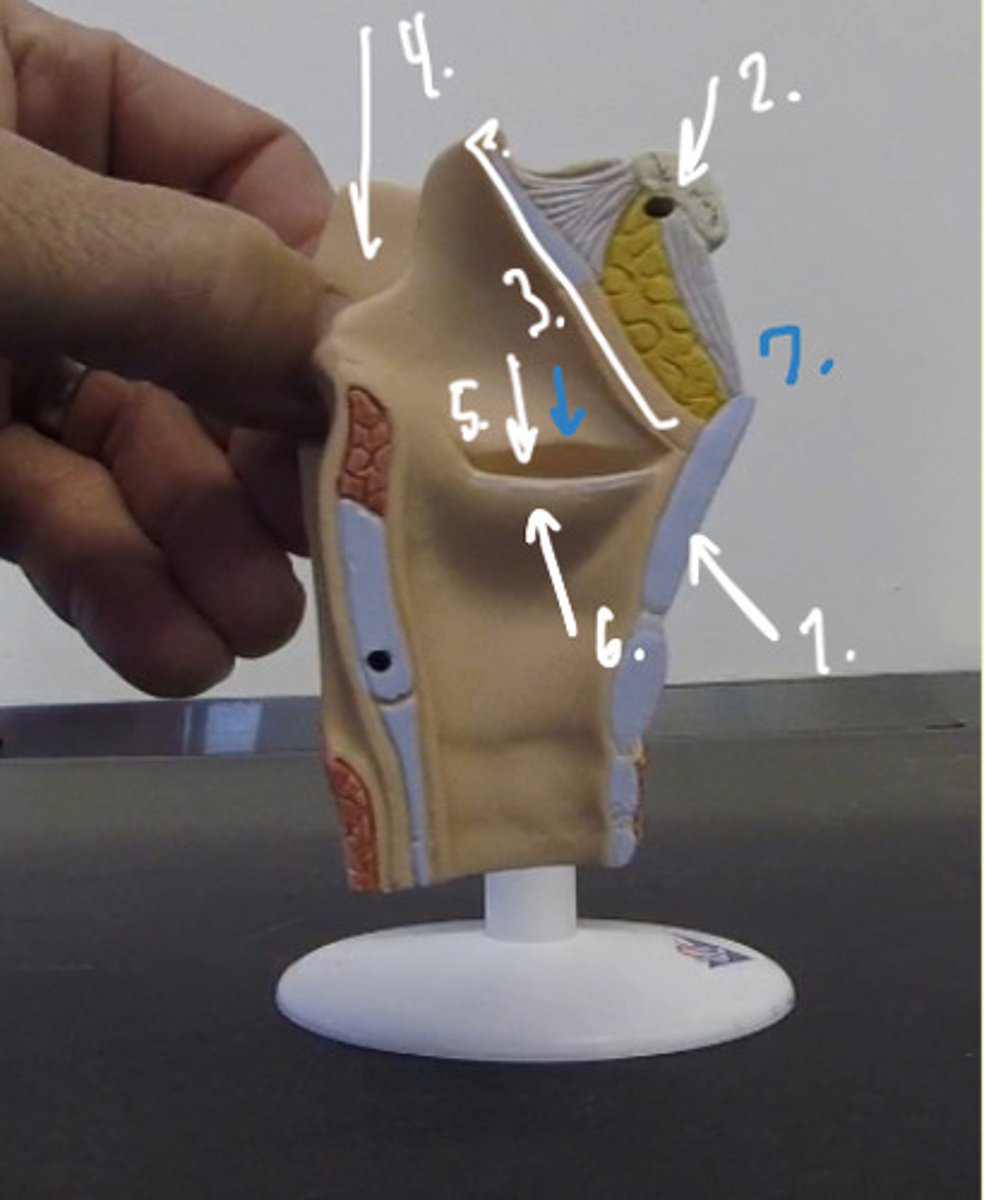
1. thyroid cartilage
2. glottis
3. epiglottis
extra info:
- #3 (folds n closes during swallowing to prevent aspiration of food)
- #1 & 3 thickens in men during puberty
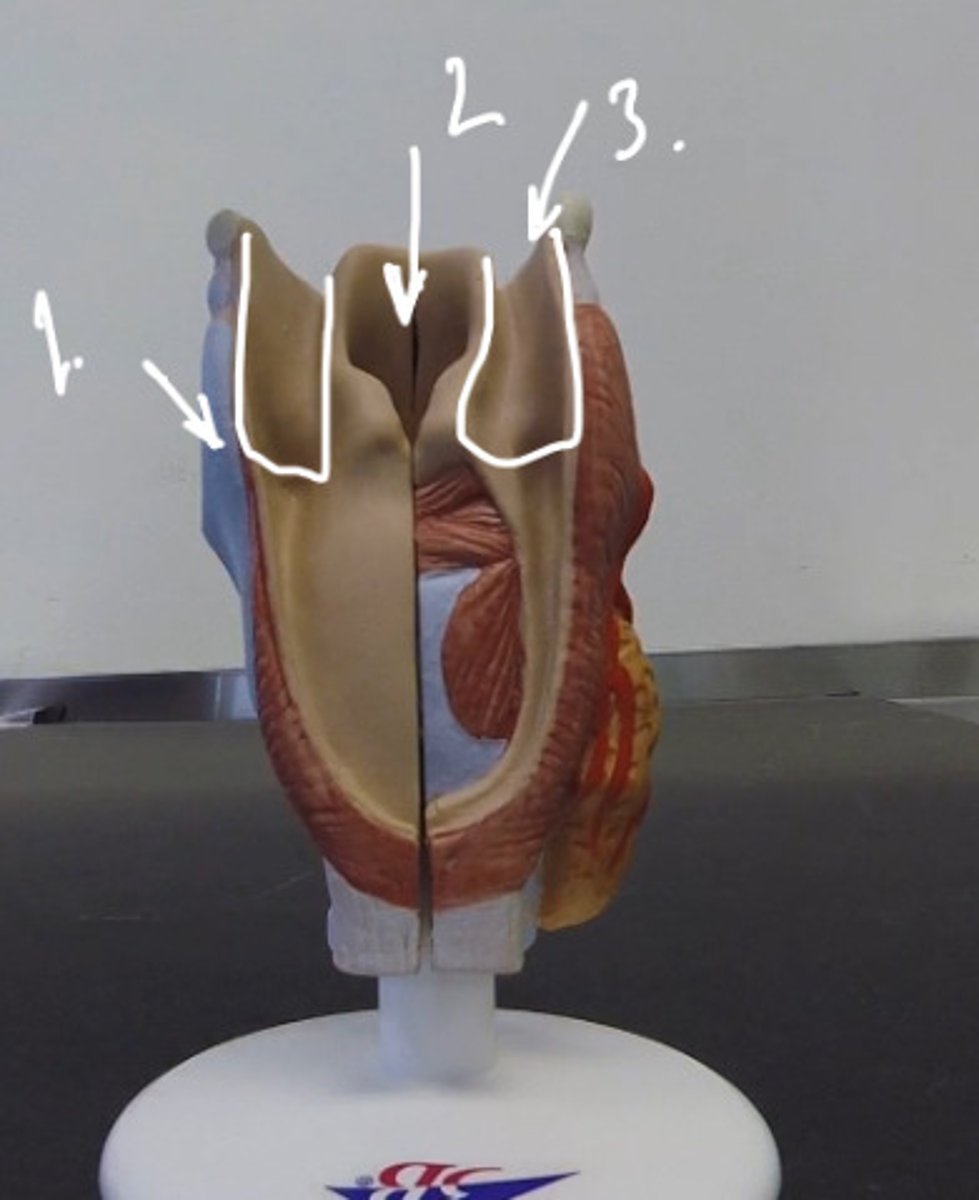
1. nasal cavity
2. nasopharynx
3. laryngopharynx
4. larynx
5. thyroid gland
6.
extra info:
- the cartilage on #4 for males has a dimorphic structure which allows it to grow aka: Adam's Apple
- #5 covers anterior trachea
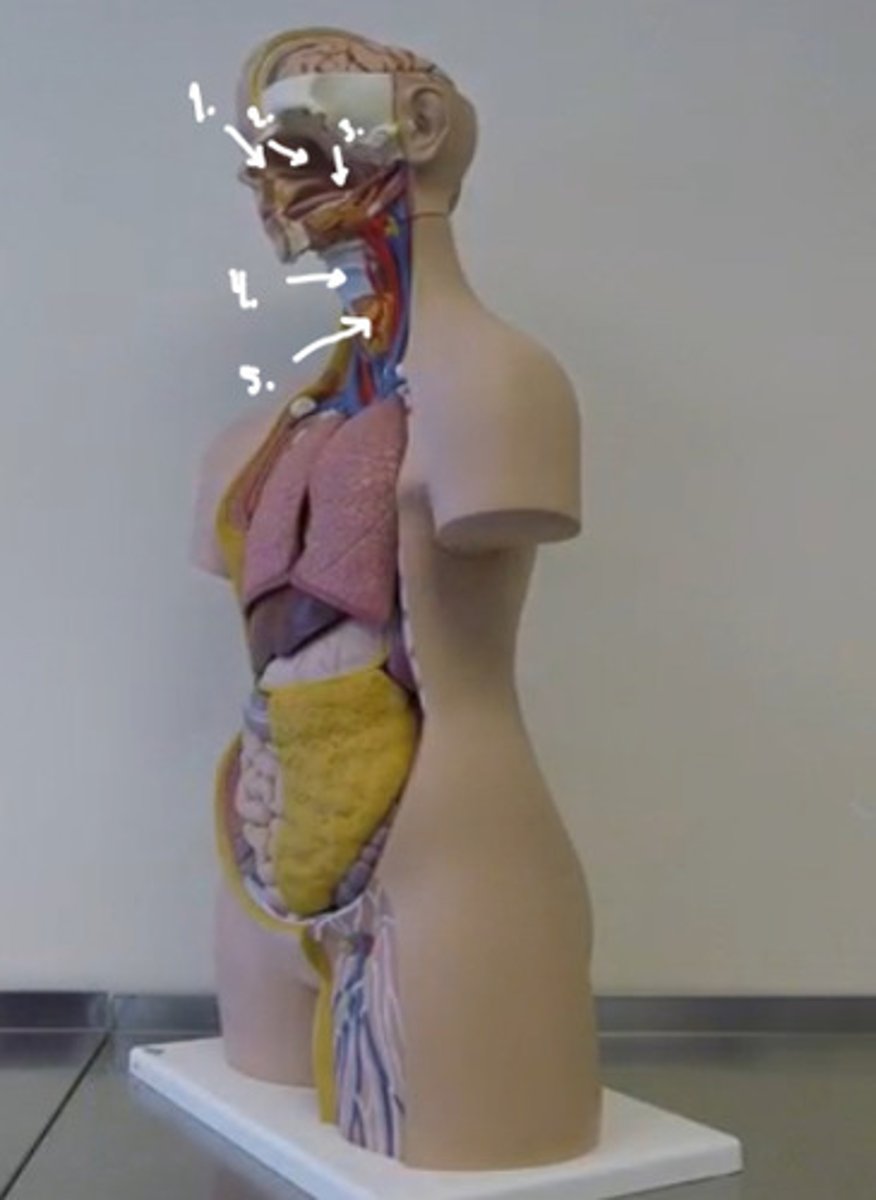
1. aortic arch, pulmonary trunk
2. esophagus
trachea is behind the ....
trachea is anterior to ...

1. superior lung lobe (left lung)
2. inferior lung lobe (left lung)
extra info:
- plural cavity is attached to surface of diaphragm + inner surface of rib/thoracic cage
- bronchioles become secondary once they get inside the lung &. bifurcate
- lung lobes divide into segments
* right lung have 3 lobes: superior, middle, inferior
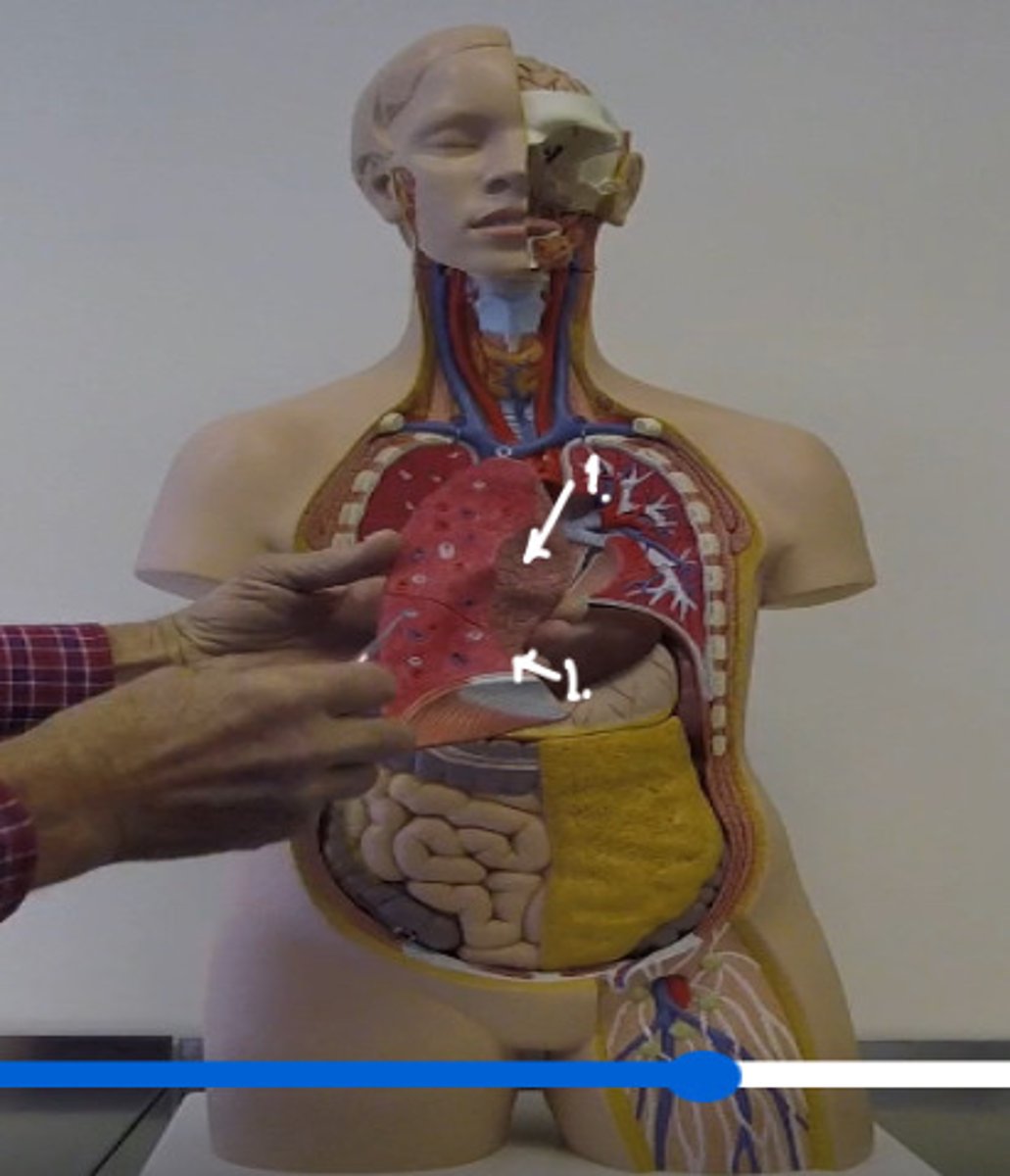
1. cortex
2. medulla
3. renal column
4. pyramids (basically a bunch of collecting ducts)
5. major calyces
6. minor calyces
7. sinus
8. uretur (emerges outa the pelvis)
9. renal artery
10. renal vein
extra info:
- minor calyces drain 1 pyramid
- major calyces drain 2 pyramids
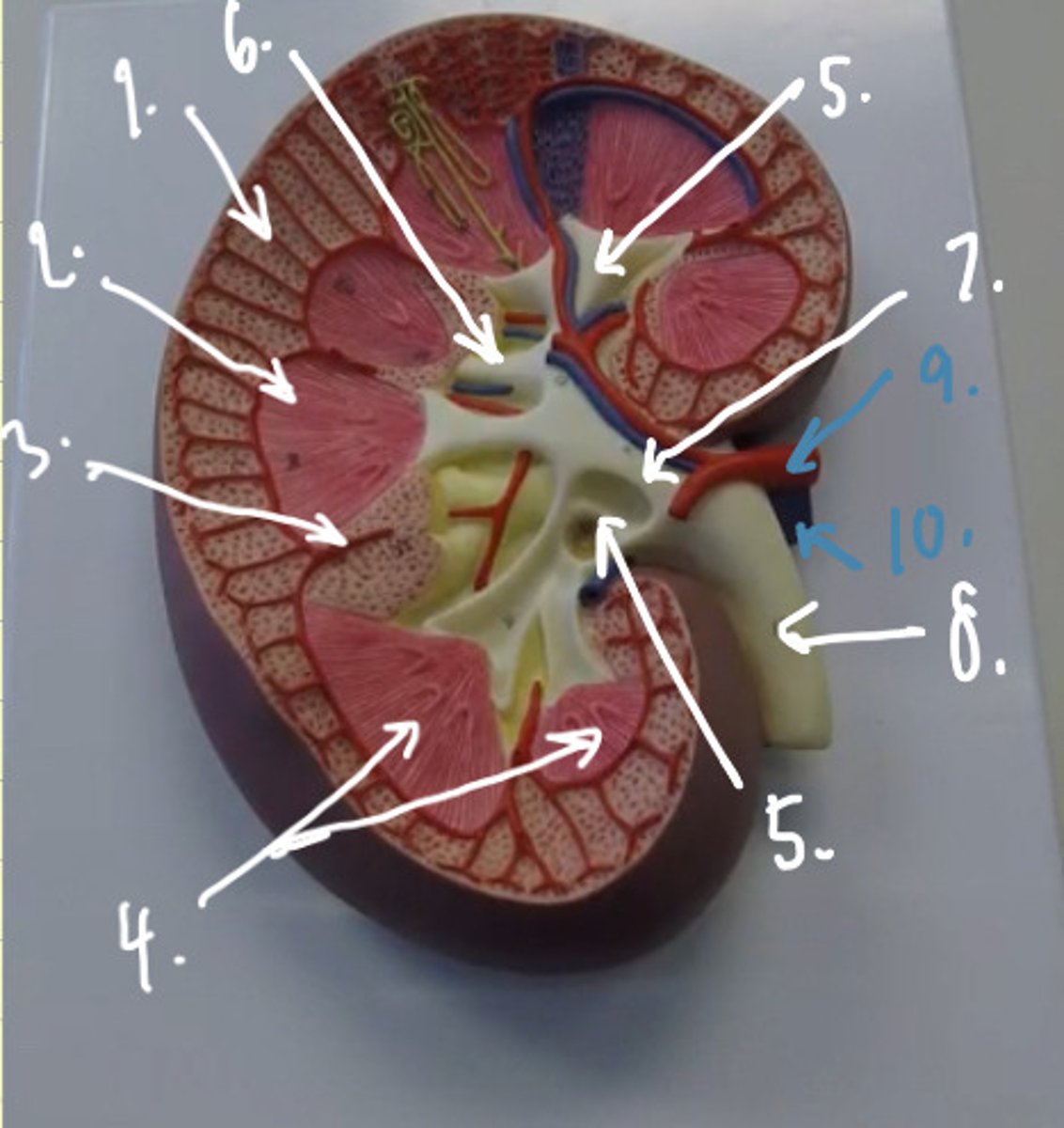
1. kidney
2. uretur
3. renal artery/vein
4. sigmoid colon
extra info:
- adrenal gland is on top of the kidney
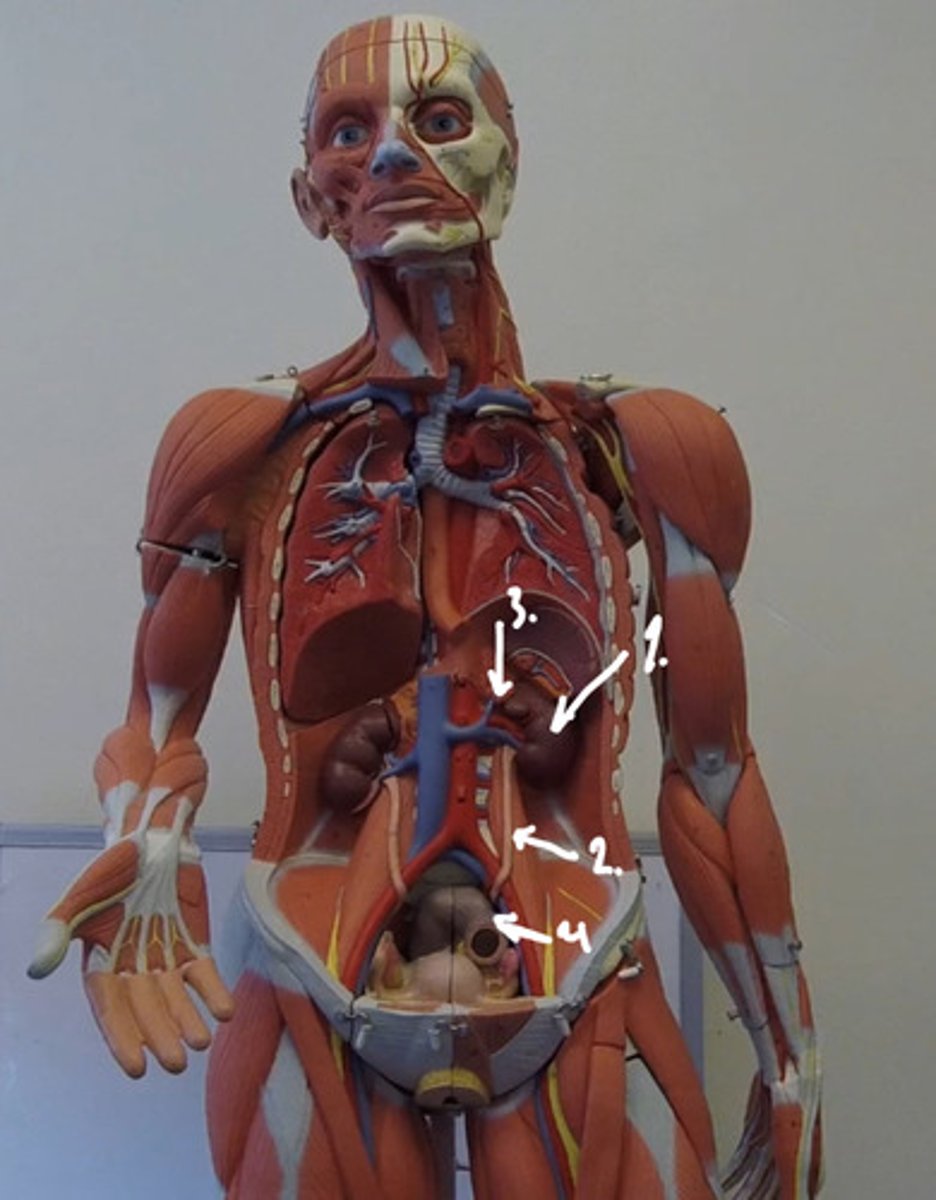
1. digestive system/tract
2. reproductive system/tract
3. urinary system/tract
4. rectum
5. anal canal
6. bladder
7. urethra (comes out of #6)
8. pubic symphysis
extra info:
- for females, #7 terminates in the vestibule
- for females, #6 is directly posterior to #8
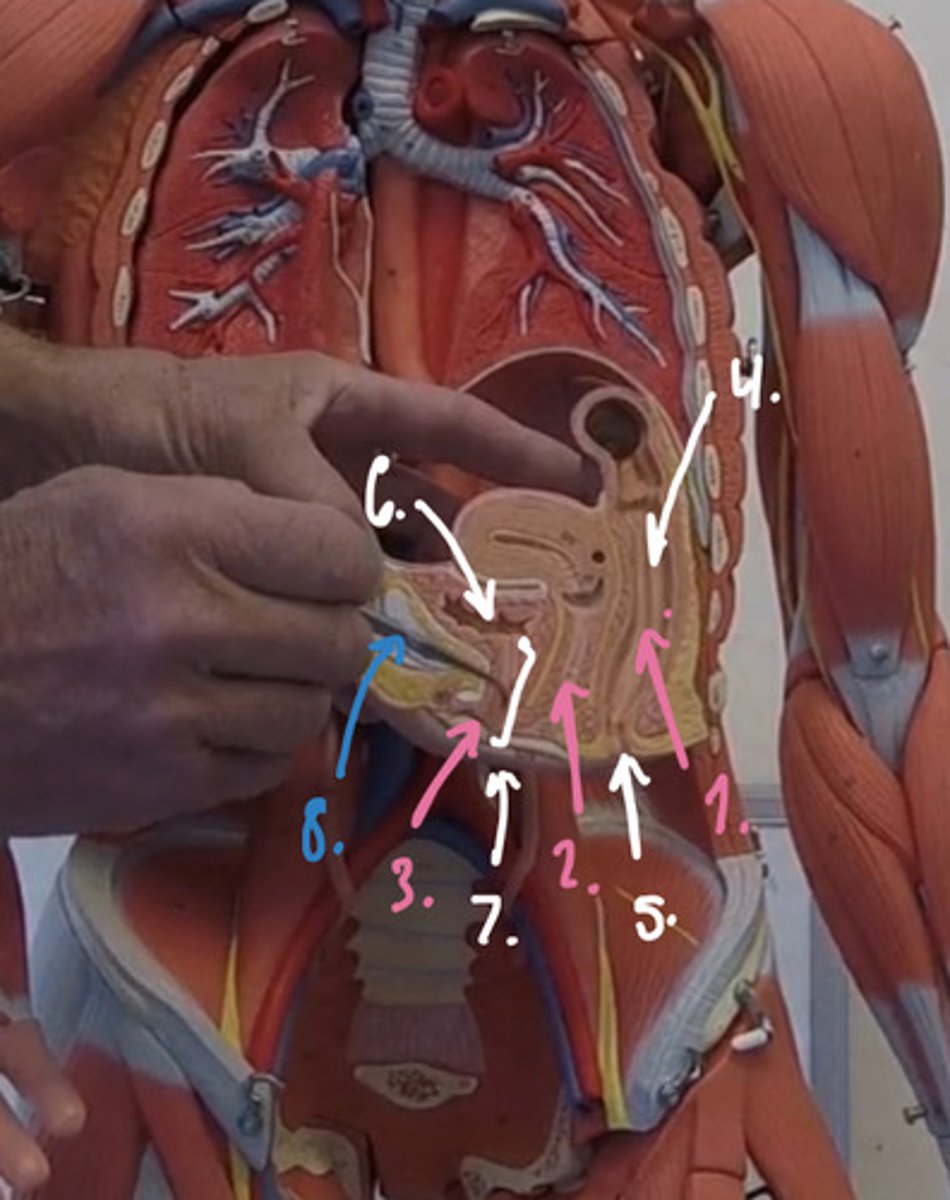
1. adrenal gland
2. renal artery/veins
3. kidneys
4. ureter
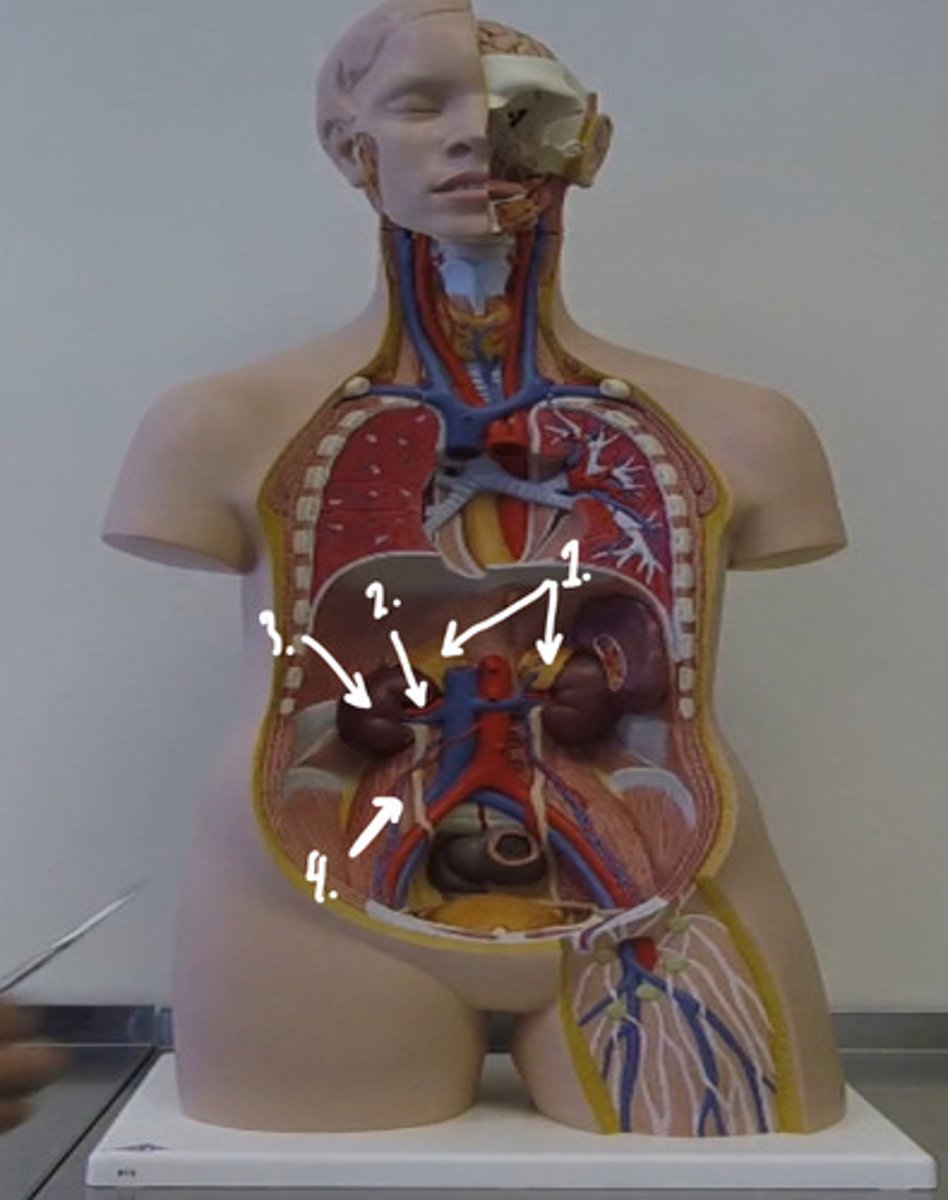
1. bladder
2. pubic symphysis
3. urethra
extra info:
- #3 is down towards/inside pelvic floor
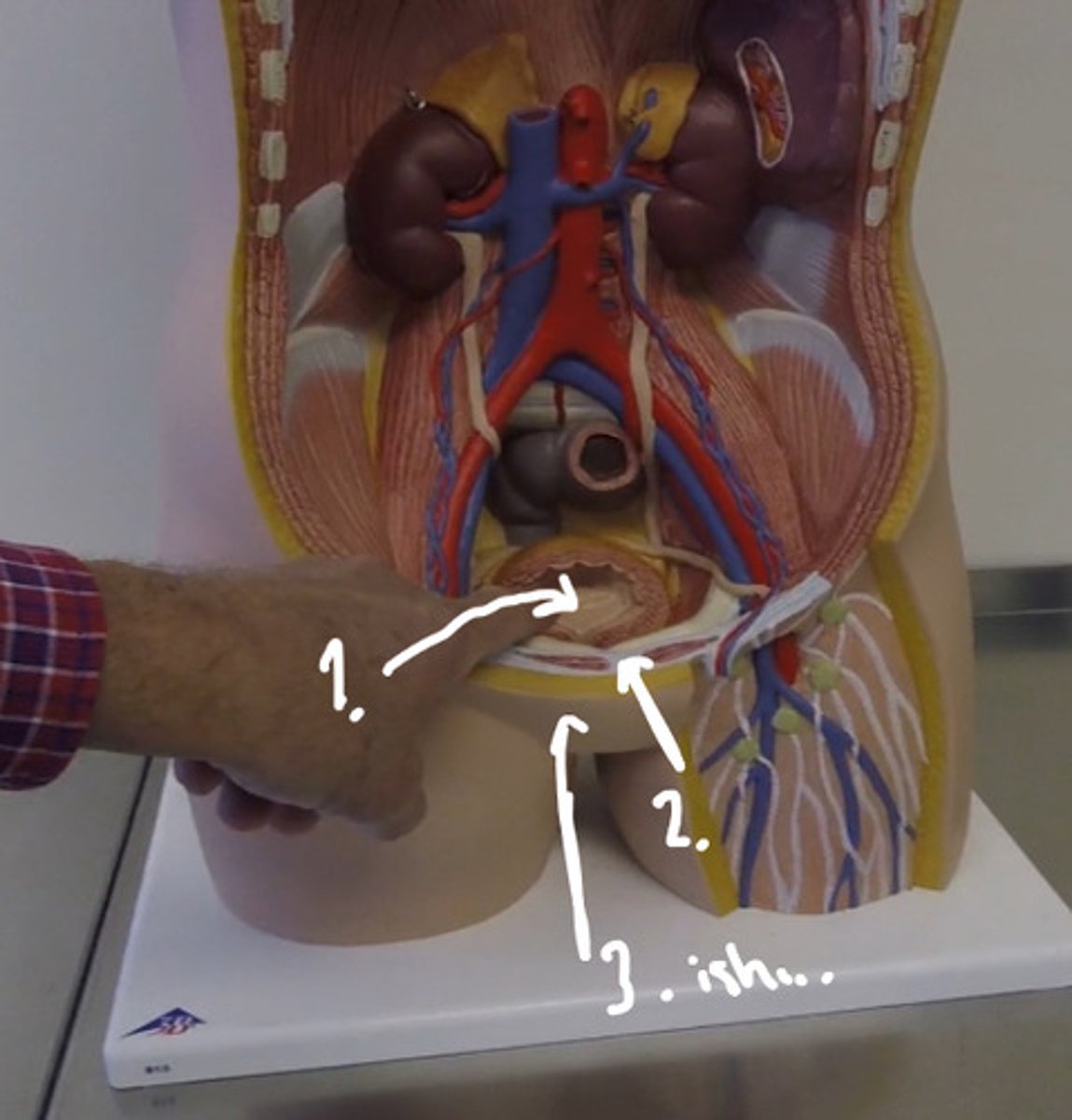
1. sigmoid colon
2. bladder
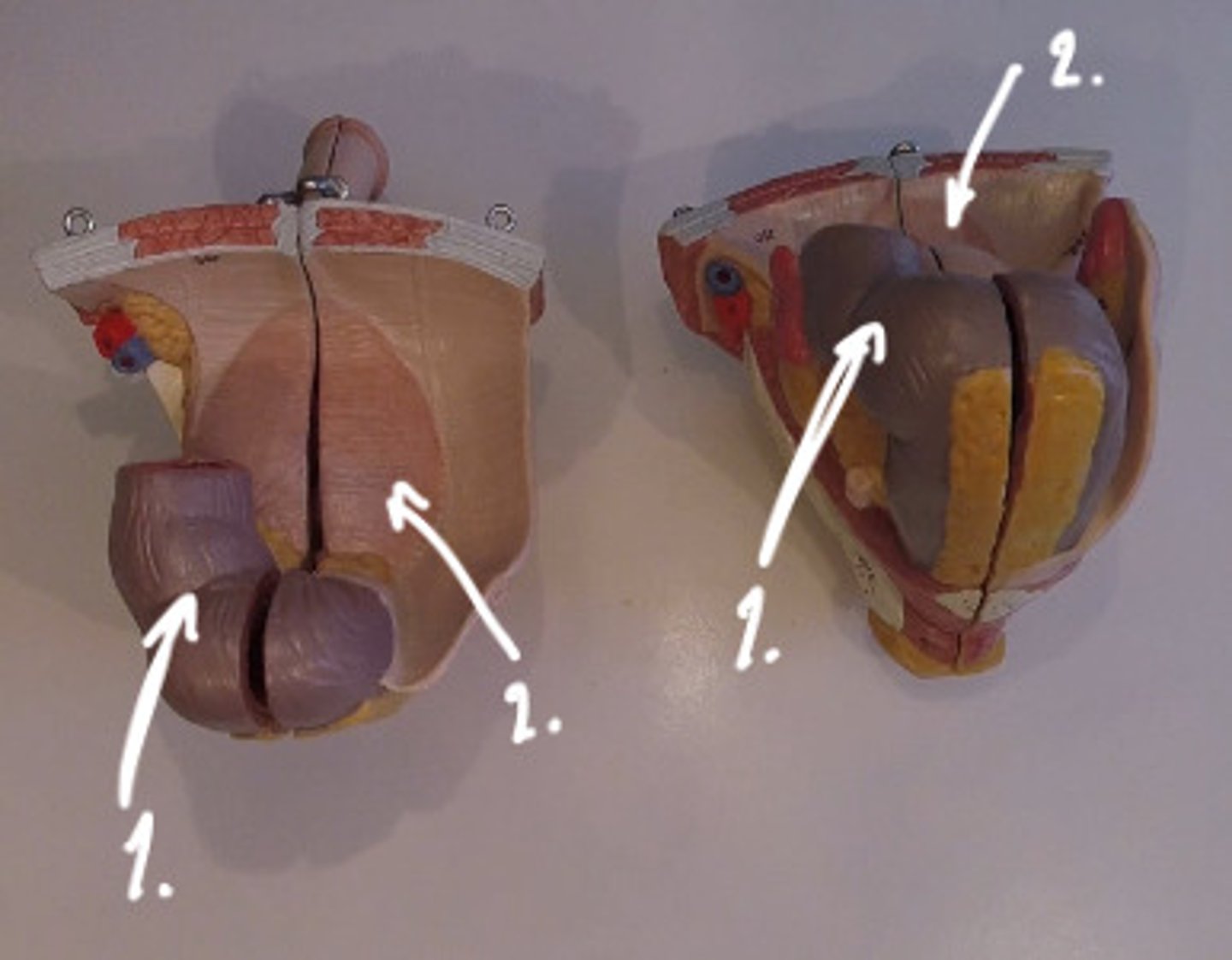
1. uterine ligamentis
2. (inside is the uterus)
3. (inside is the top of the bladder)
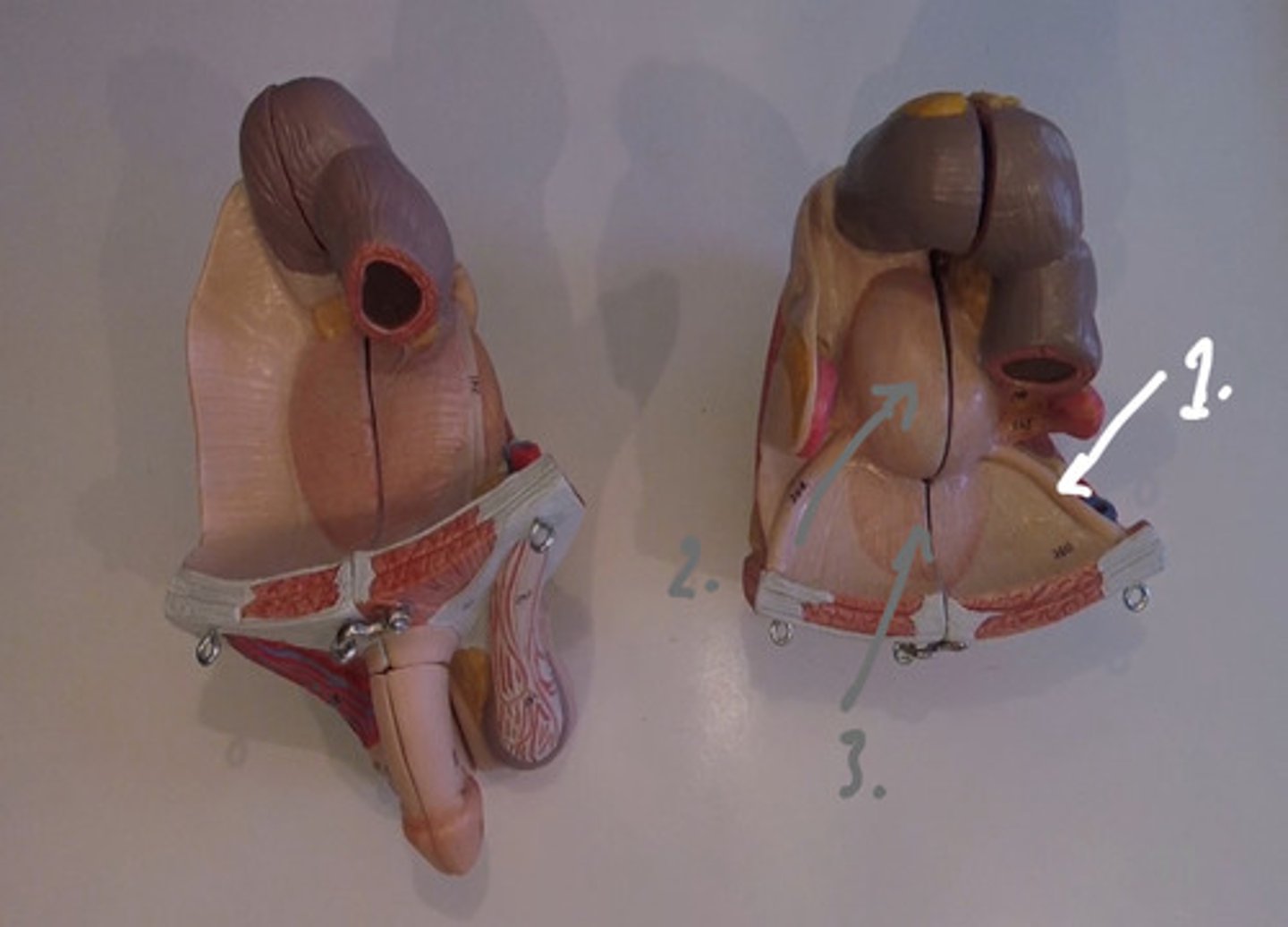
1. uterine ligamentis
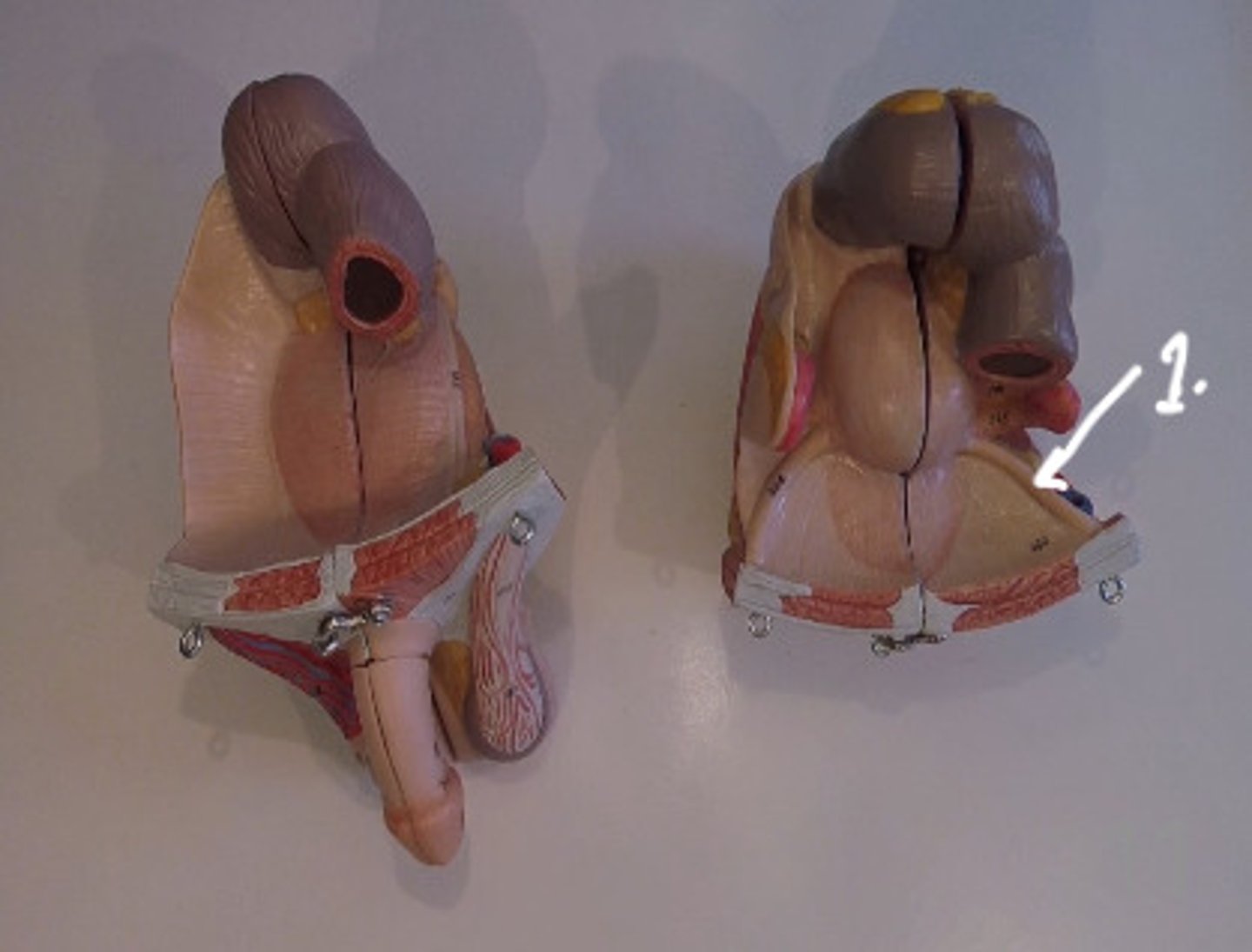
1. labia majora
2. labia minora
3. vestibule
4. clitorus
5. bladder
6. urethra (--> the vestibule)
7. uterus
8. cervix
9. vaginal canal (---> vestibule)
10. rectum
11. anal canal
12. myometrium of #7
13. internal cavity of #7

1. fembriae of fallopian tube
2. ovary
3. uterus
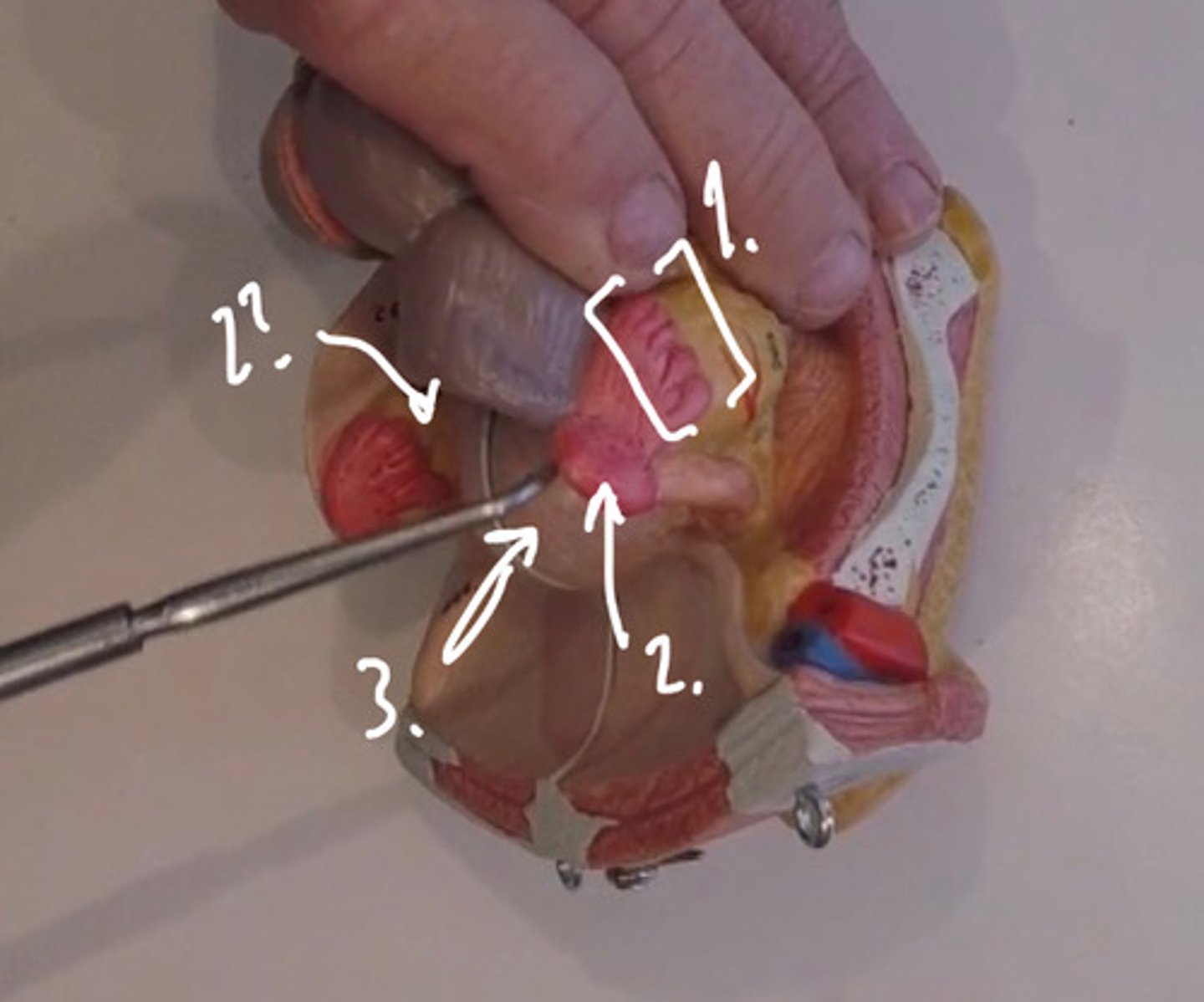
1. rectum
2. bladder
3. urethra (--> #4)
4. spongy urethra
5. caporeia cavernosa
6. ejaculatory duct
7. prostate
8. capoeria spongiosum (surrounds #4)
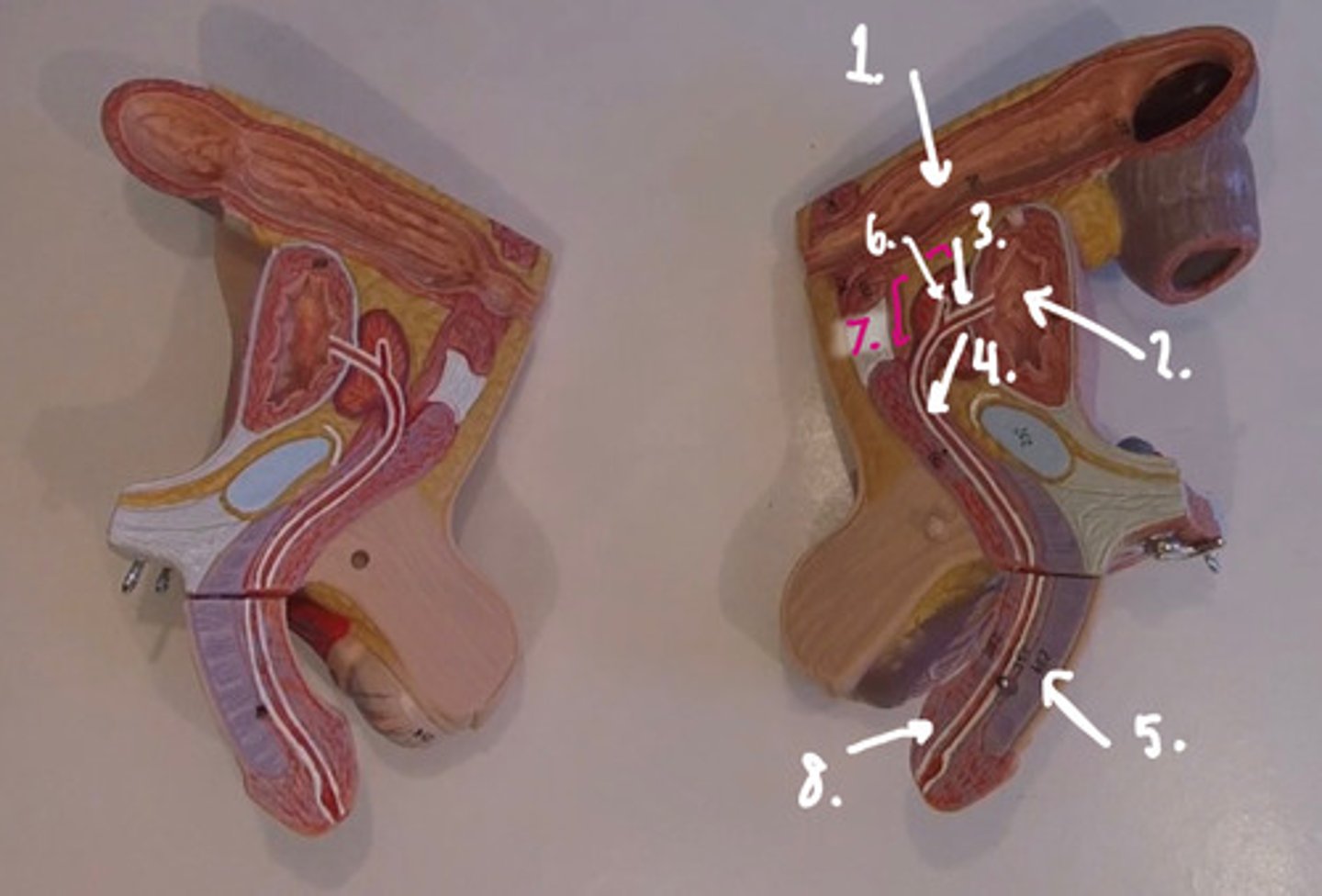
1. epidydimus (📍 of sperm storage)
2. testes (📍of spermatogenesis)
3. spermacord (vascular tissue)
extra info:
- vas deferon runs thru spermacord
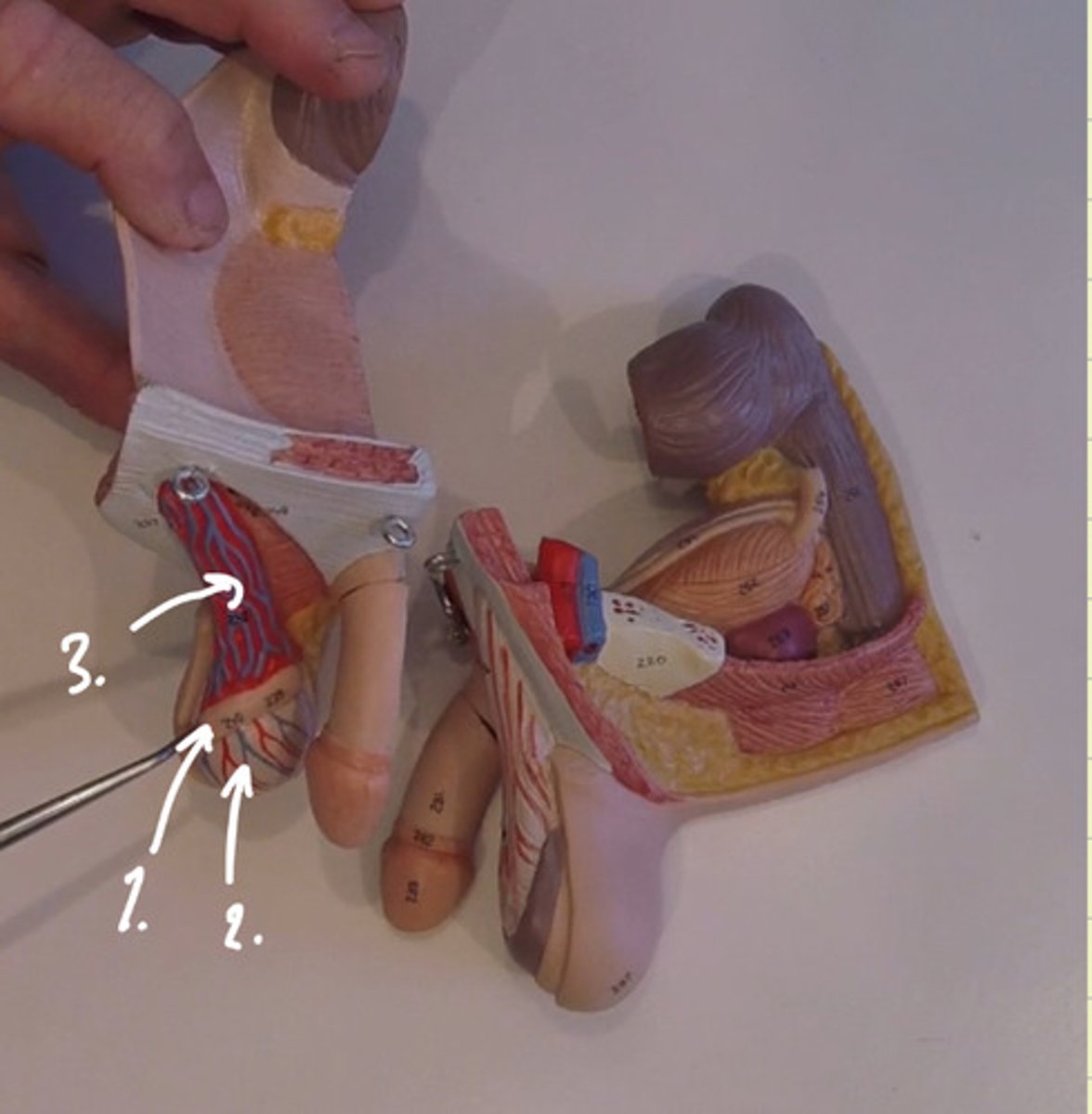
1. vas deferon
2. gonadal artery/vein & inguinal canal (is the opening)
3. duct of the seminal vesicle
(#3 ends up going into the midline --> the prostate --> urethra -->)
